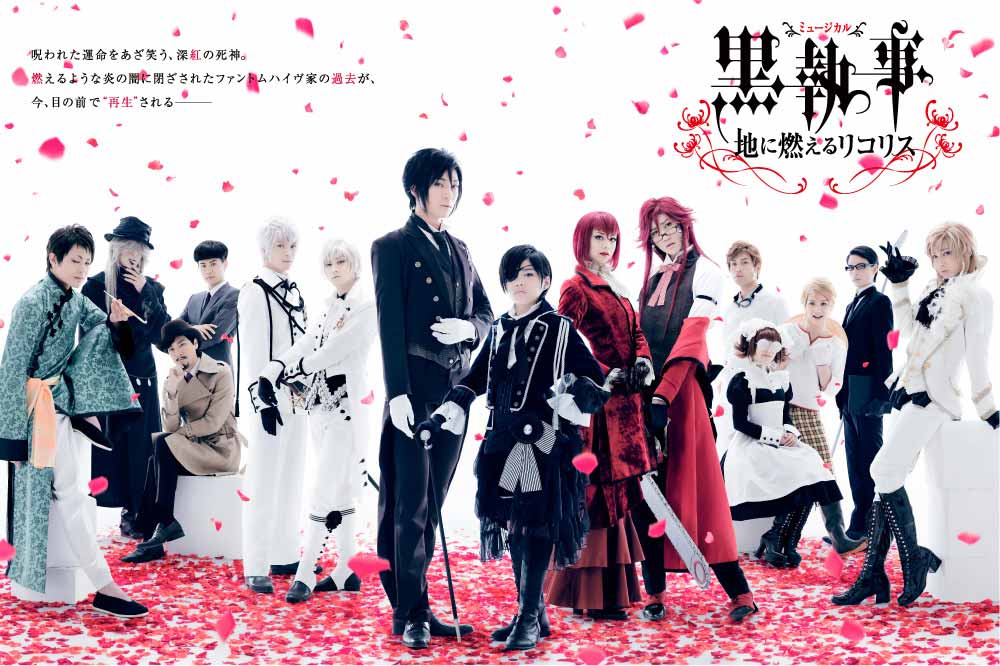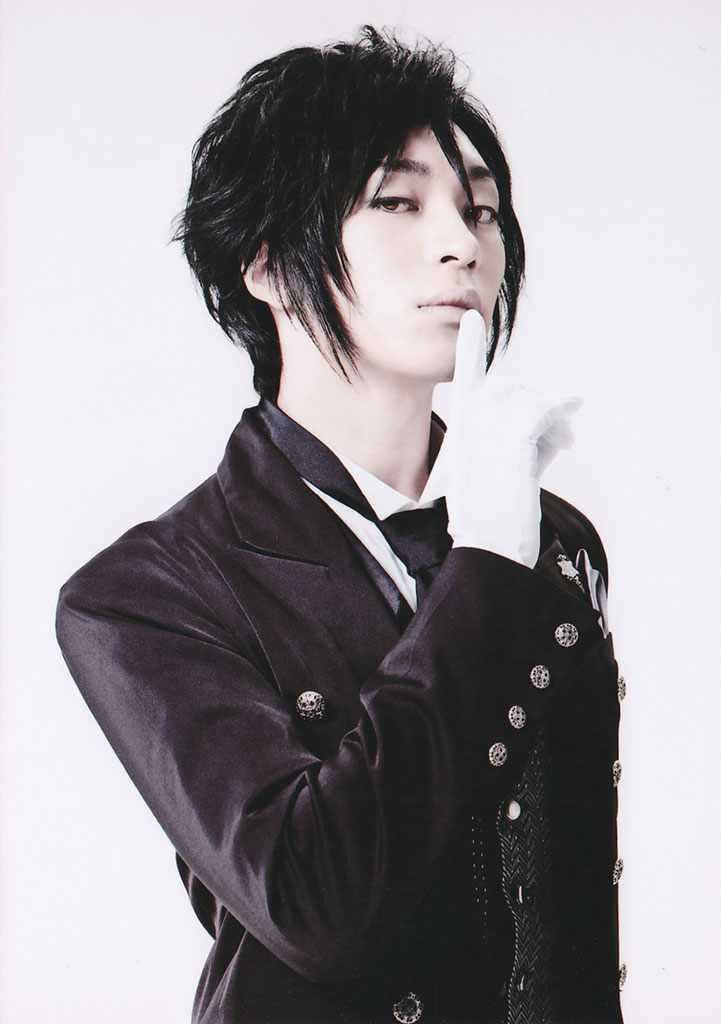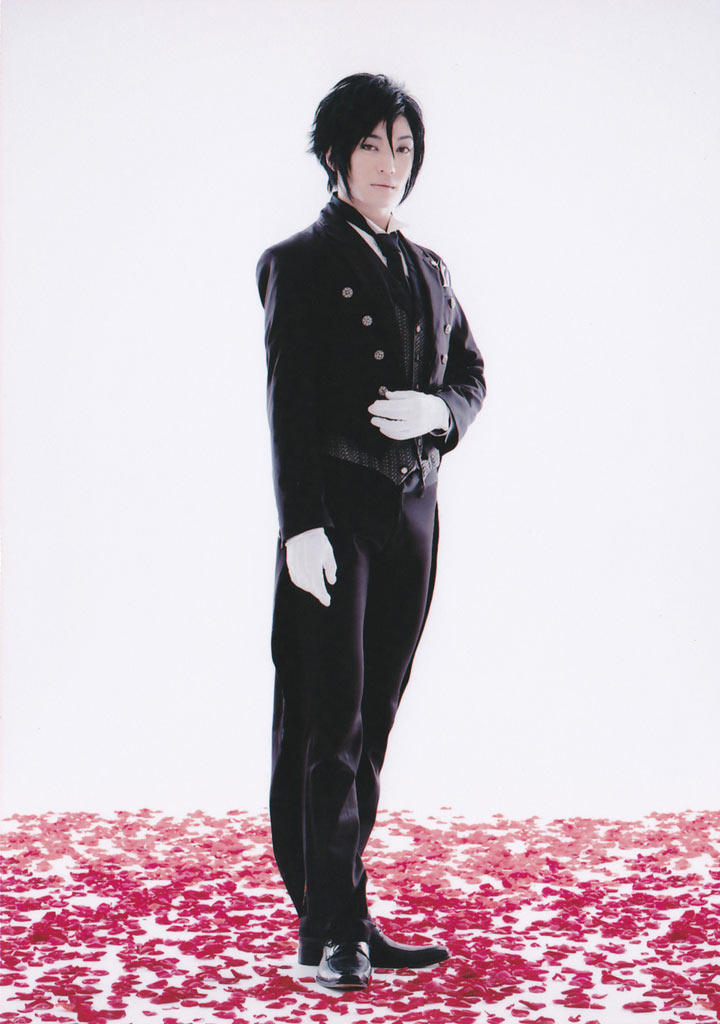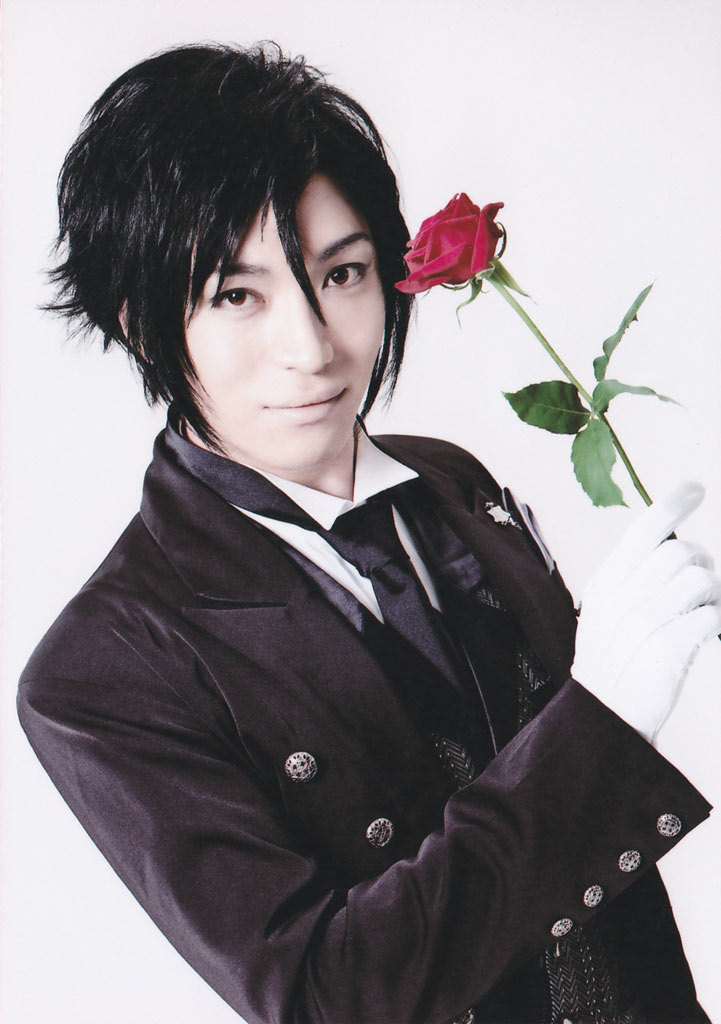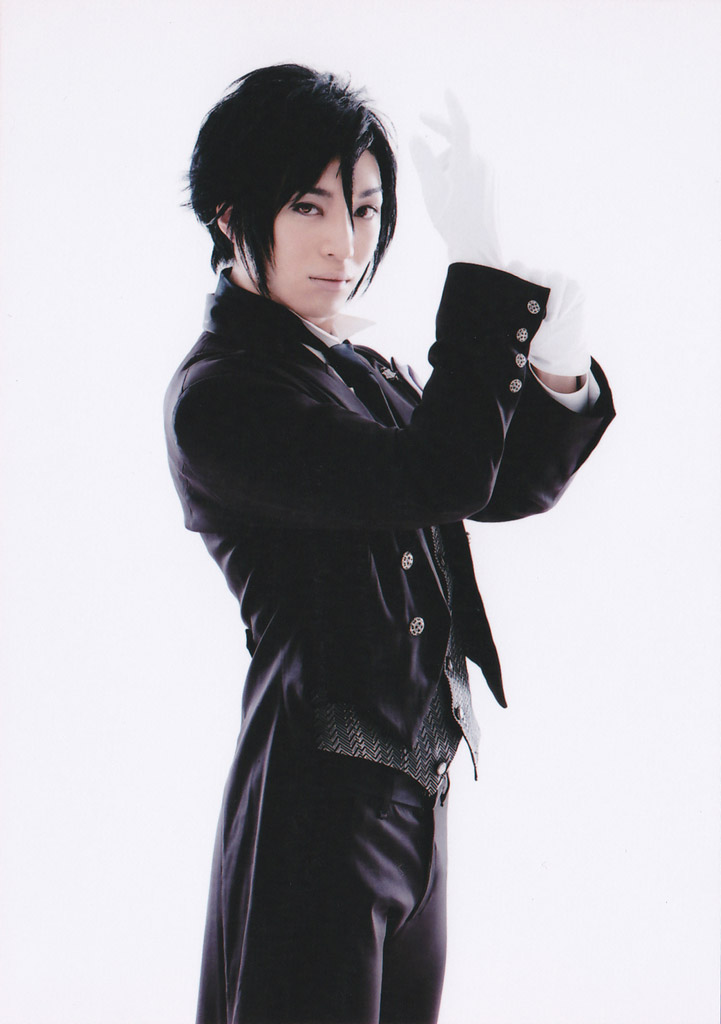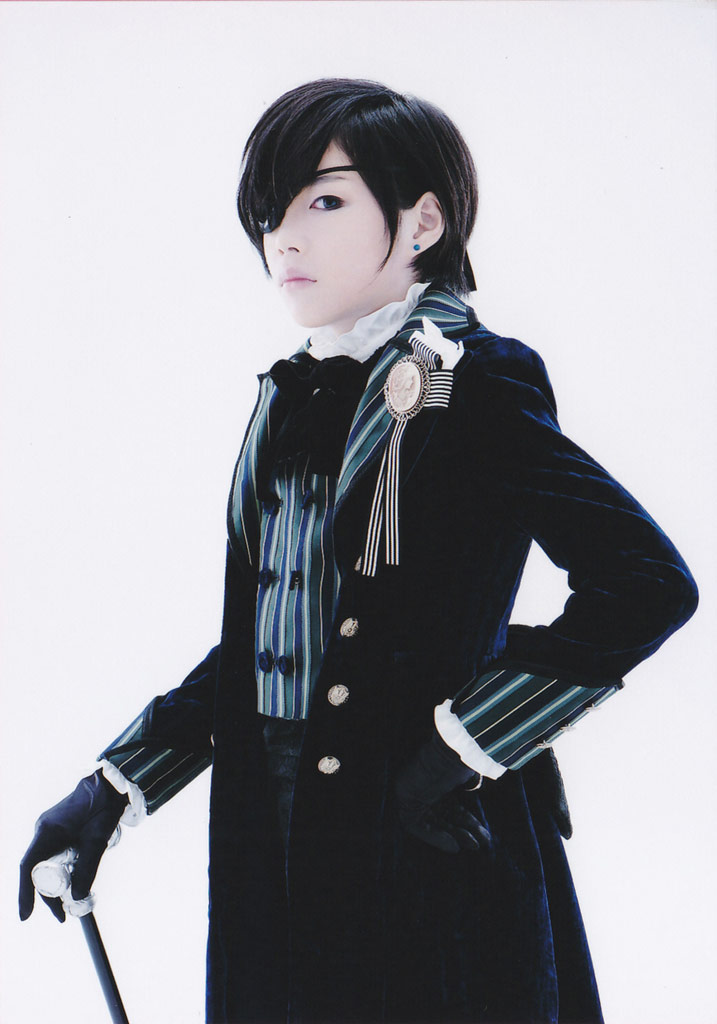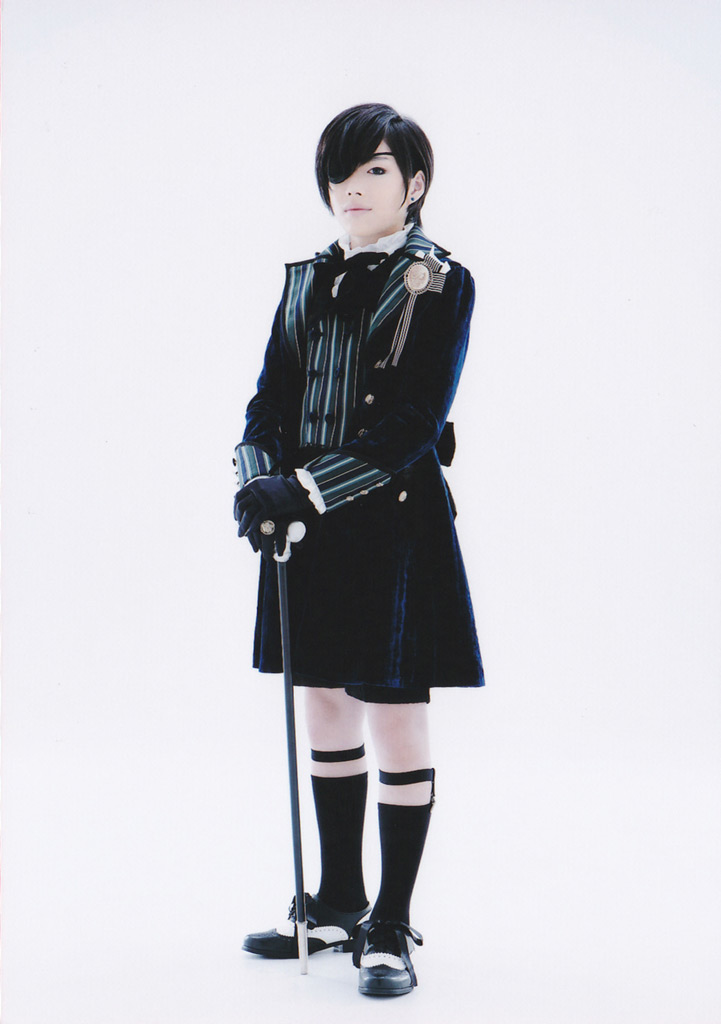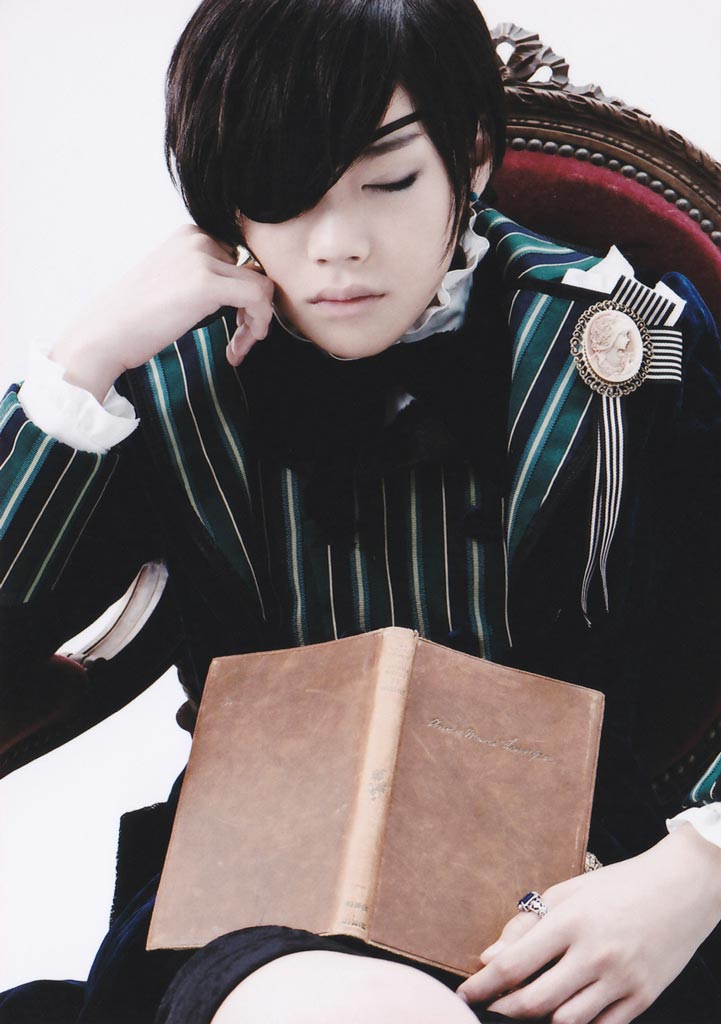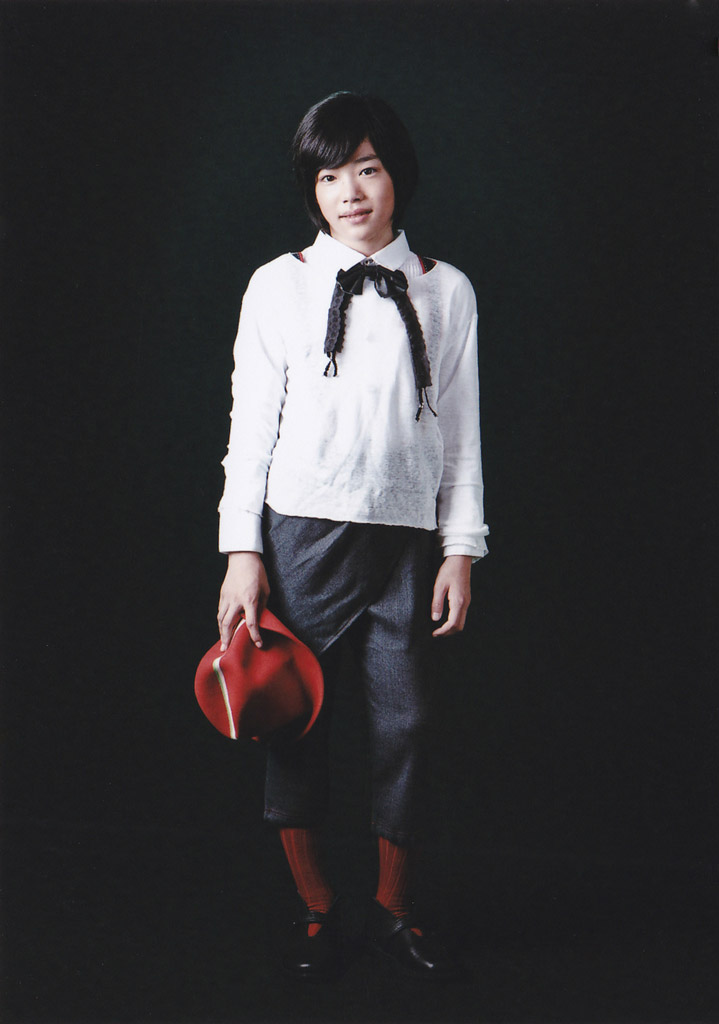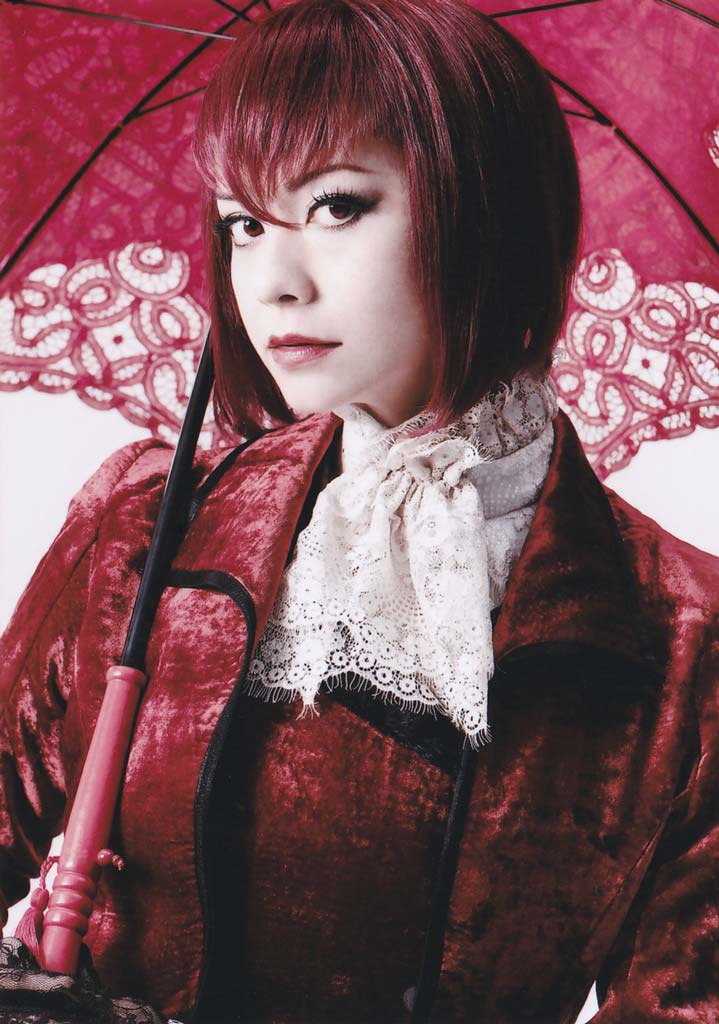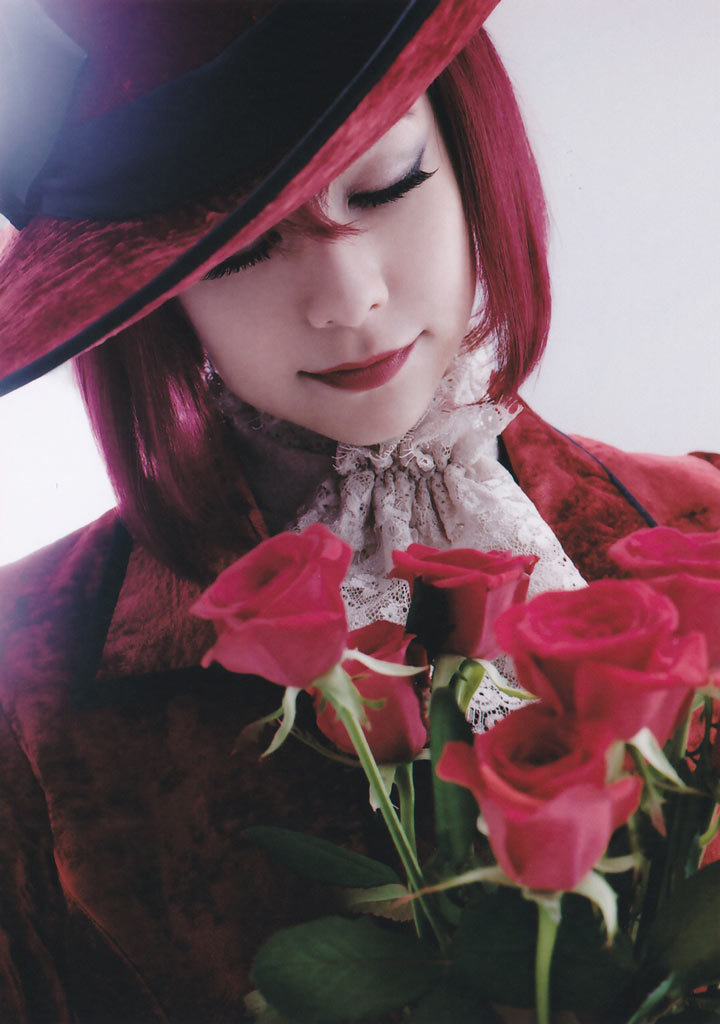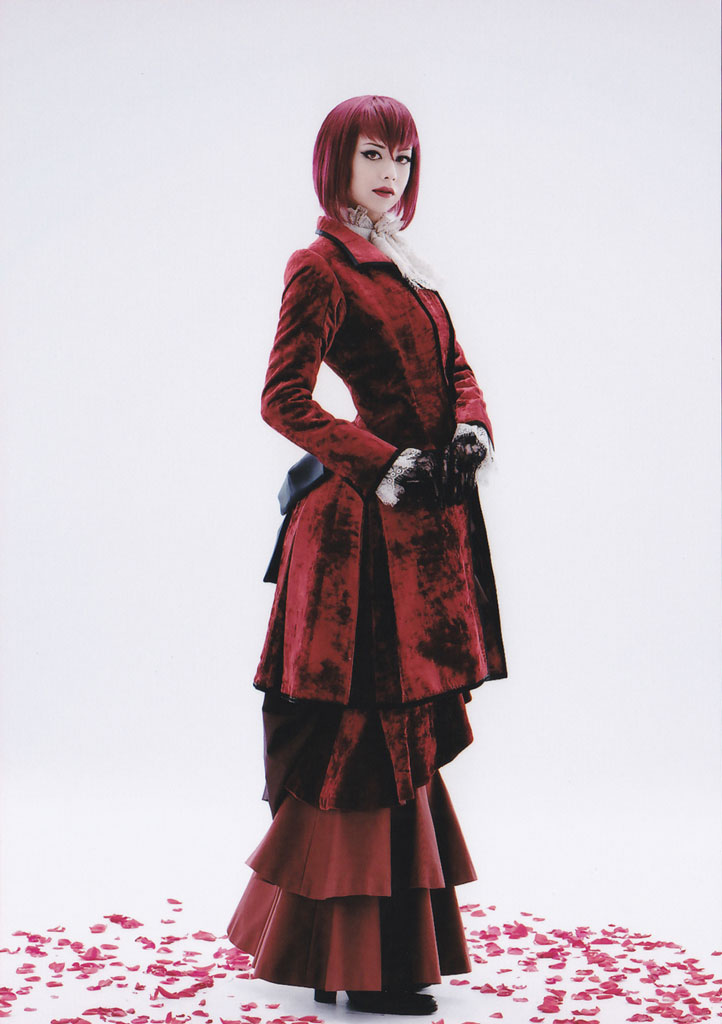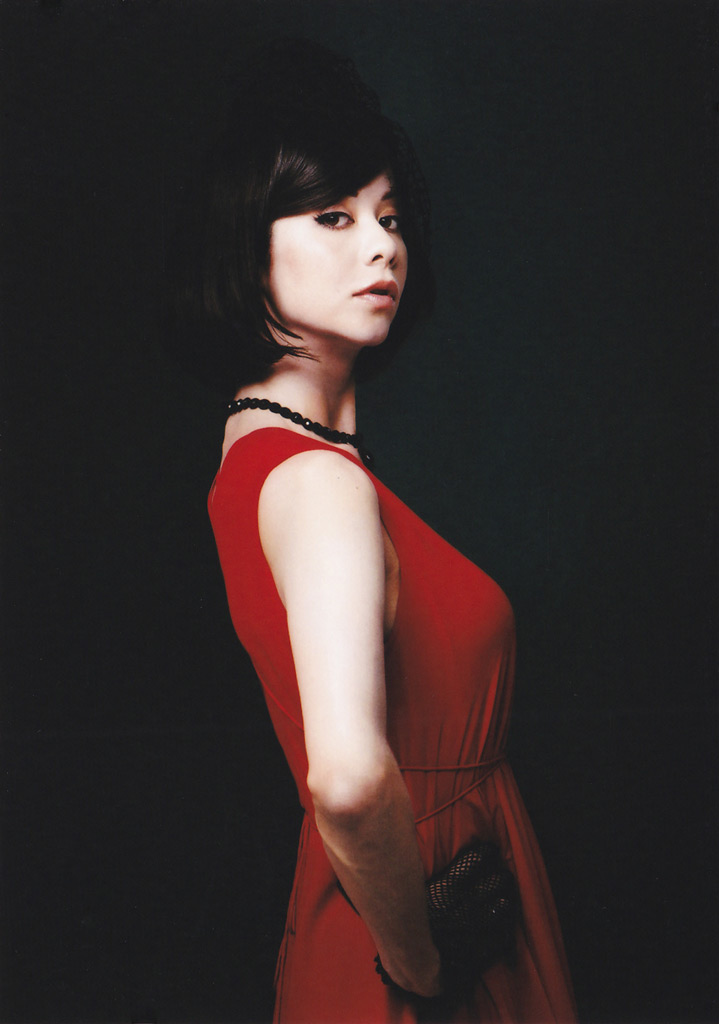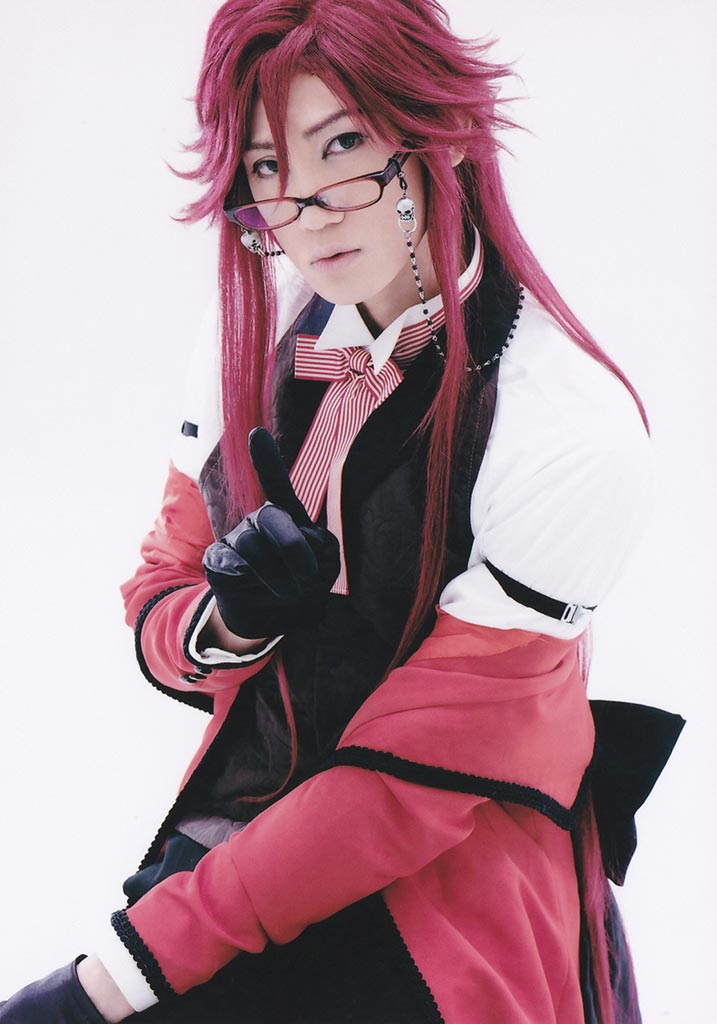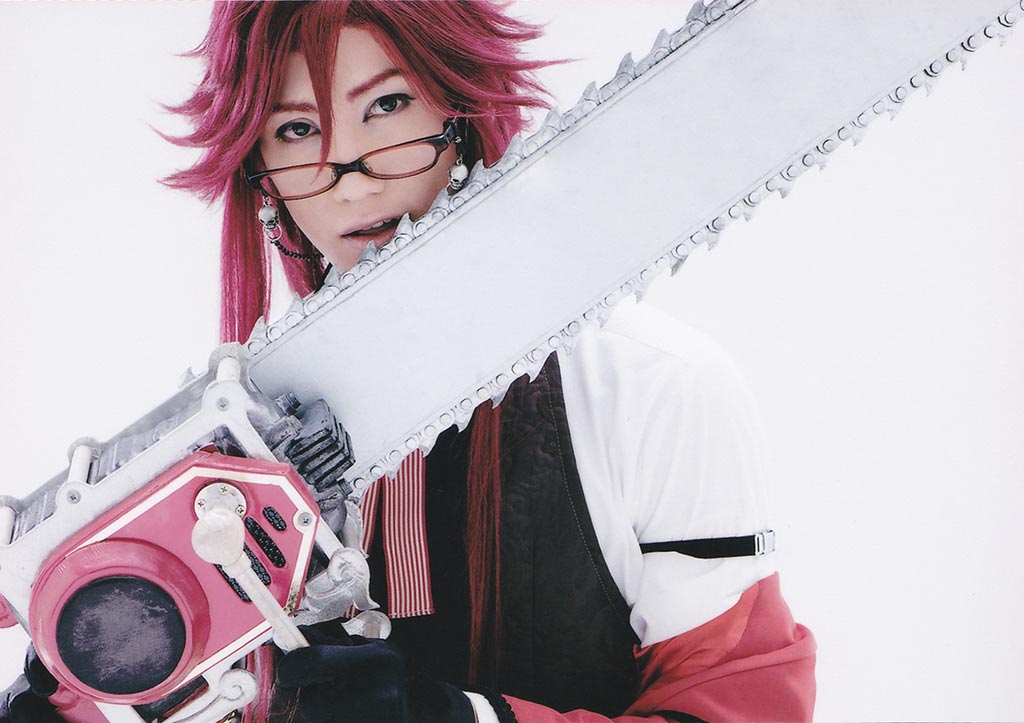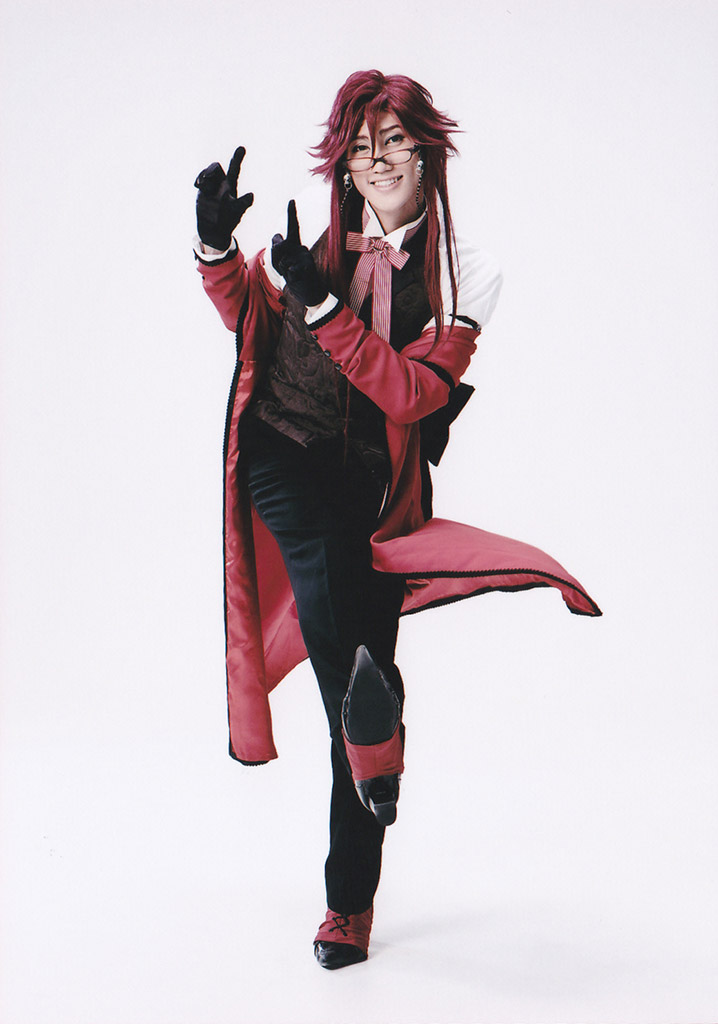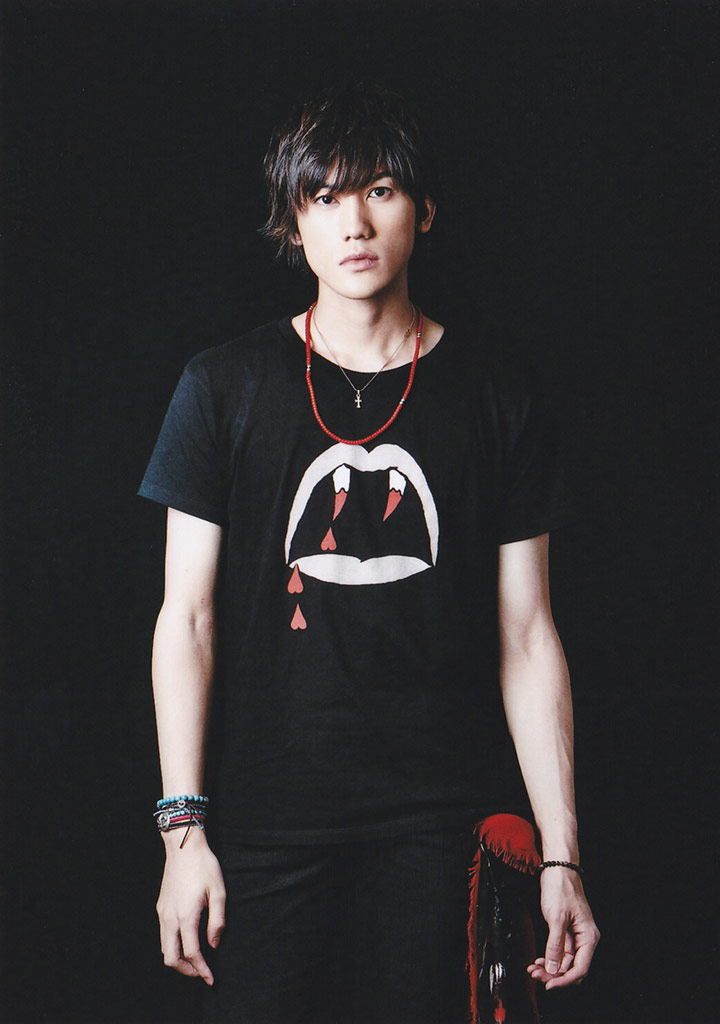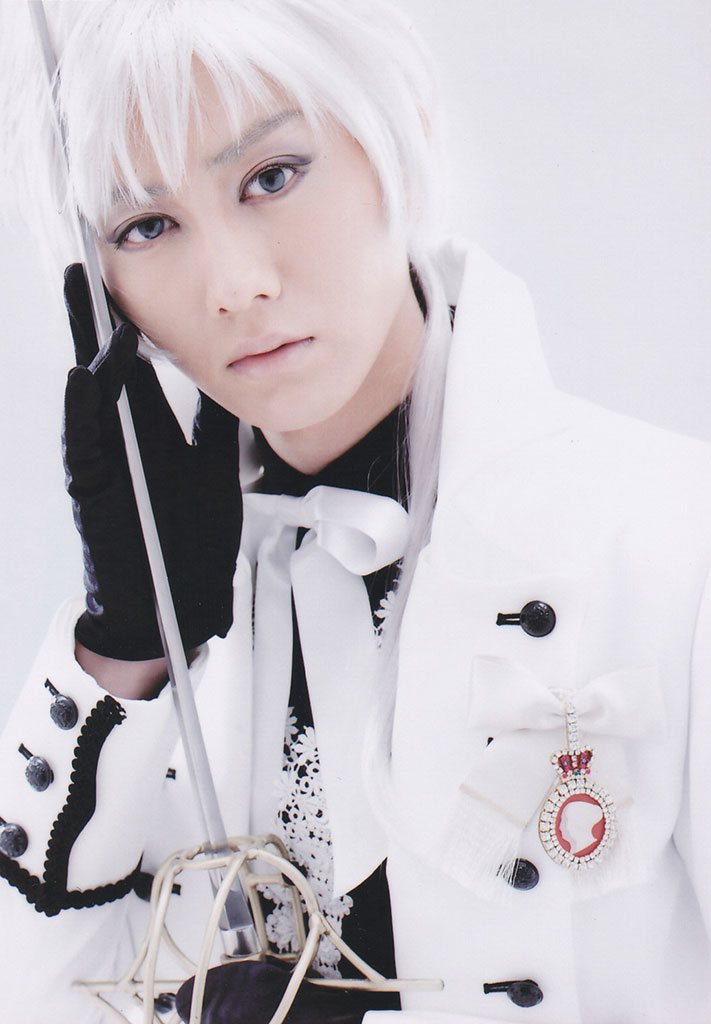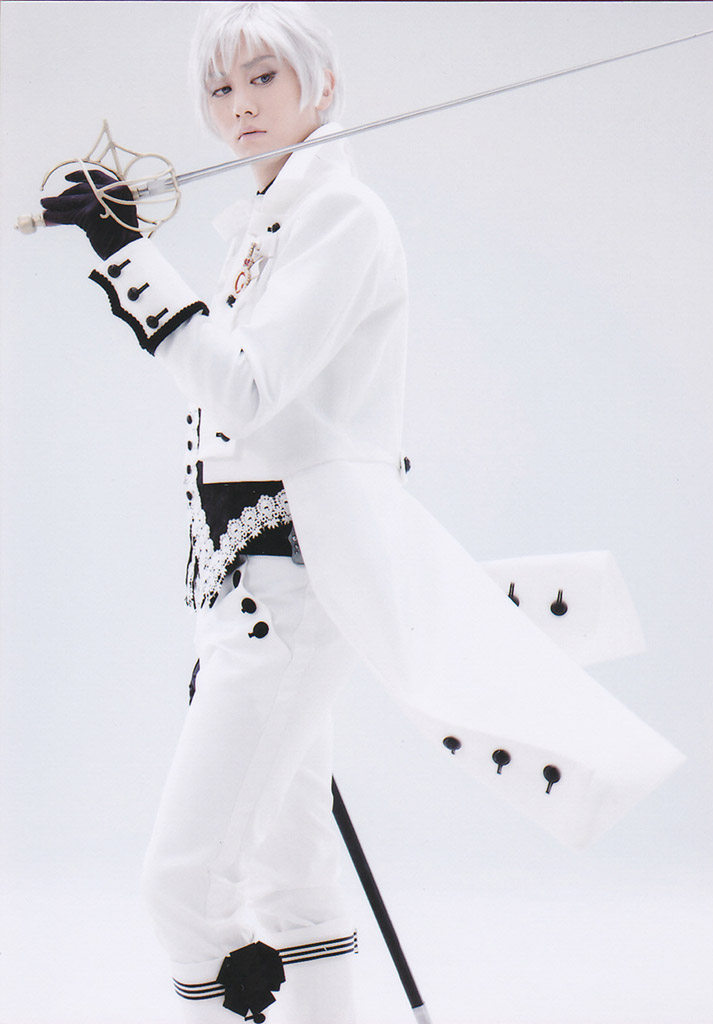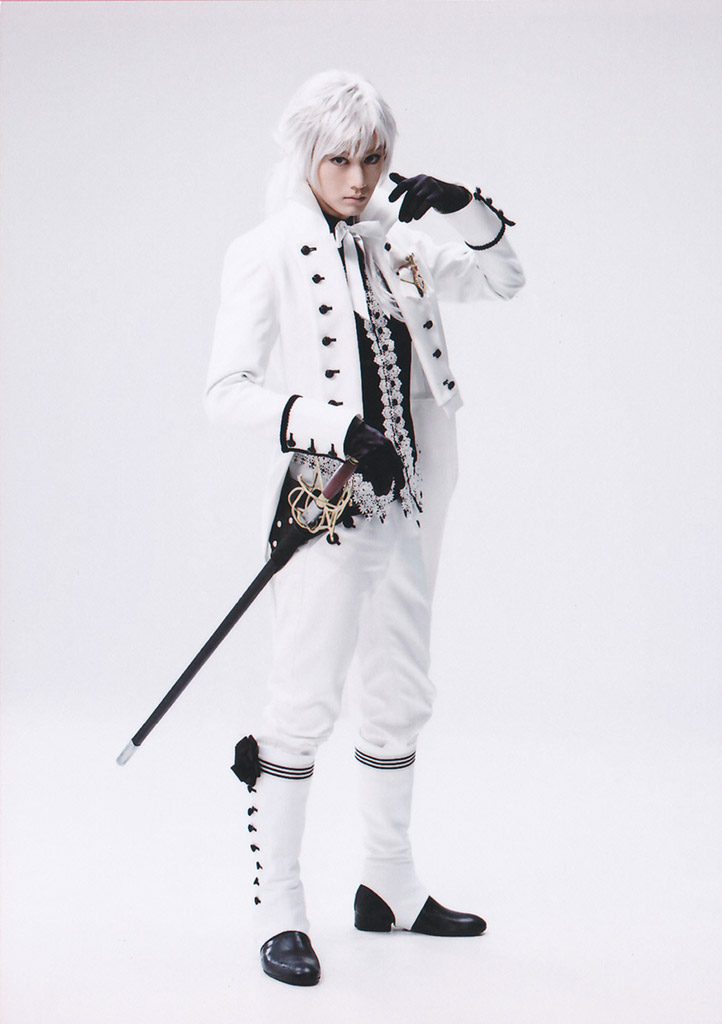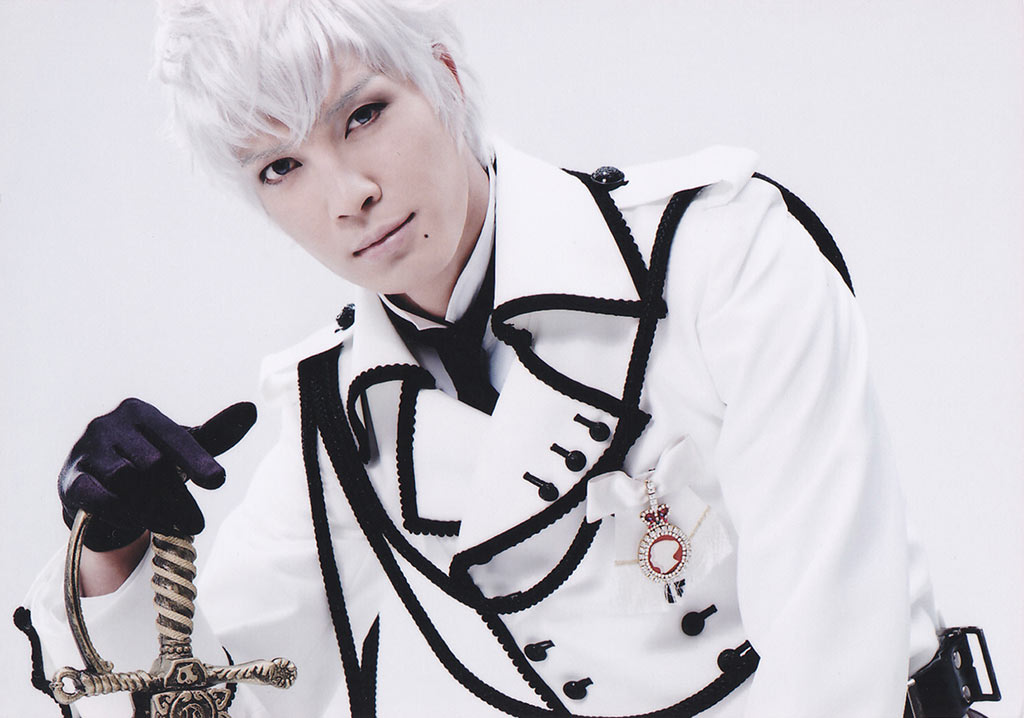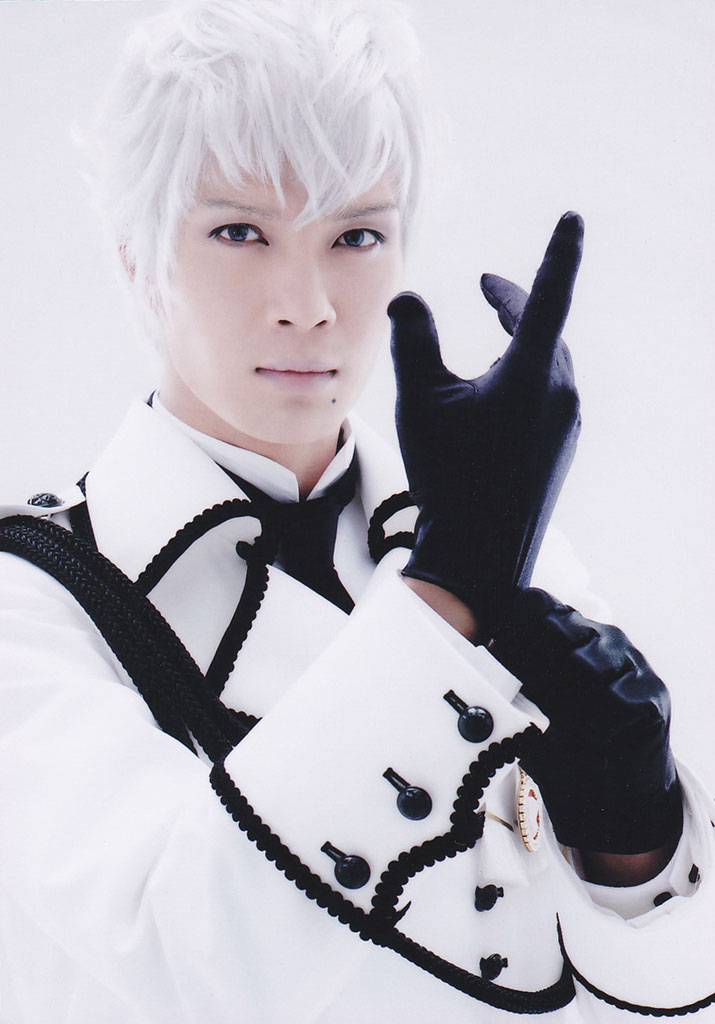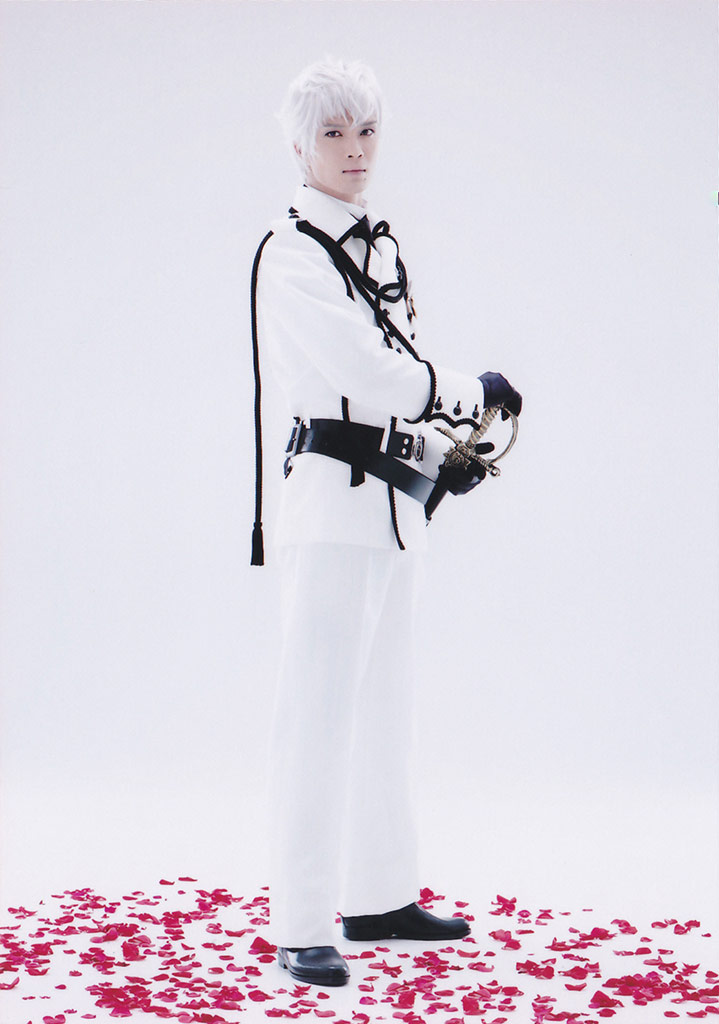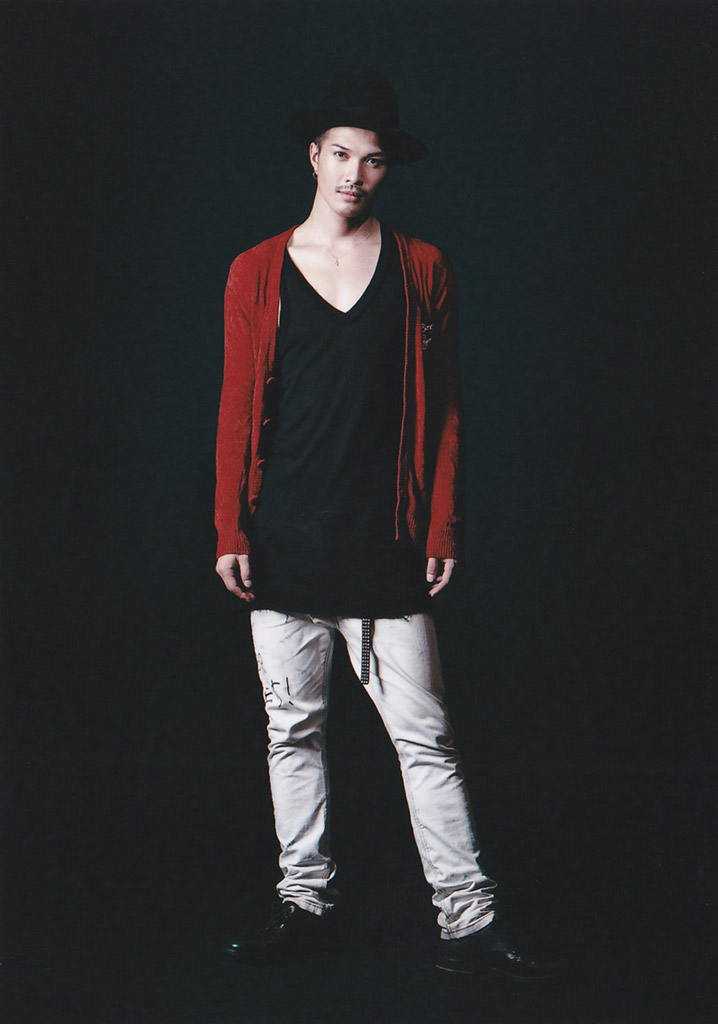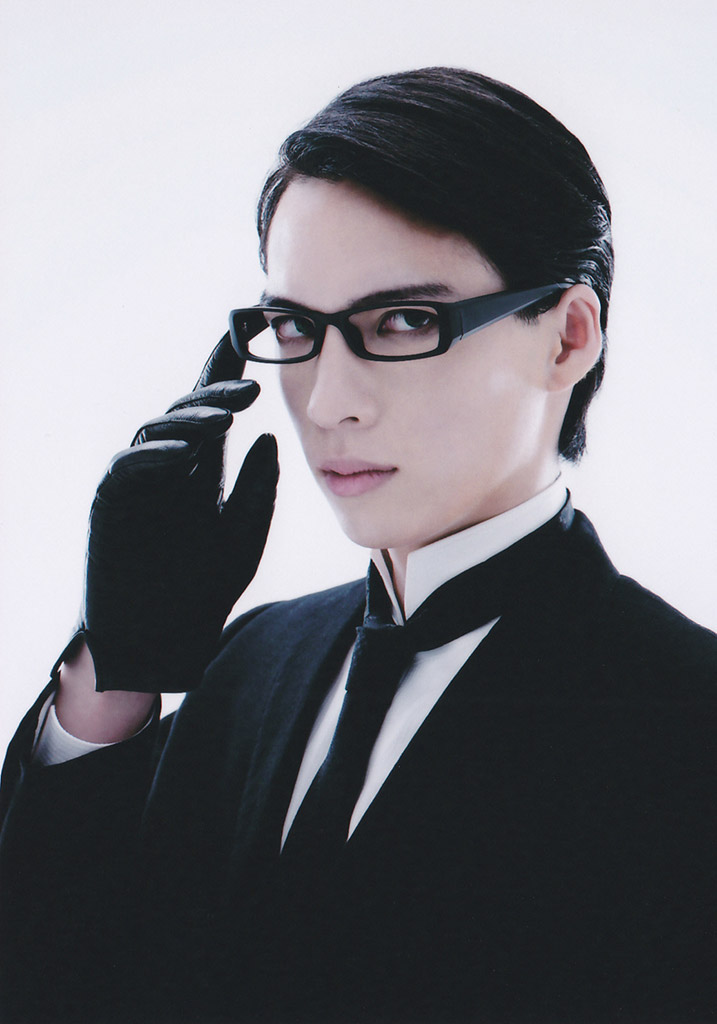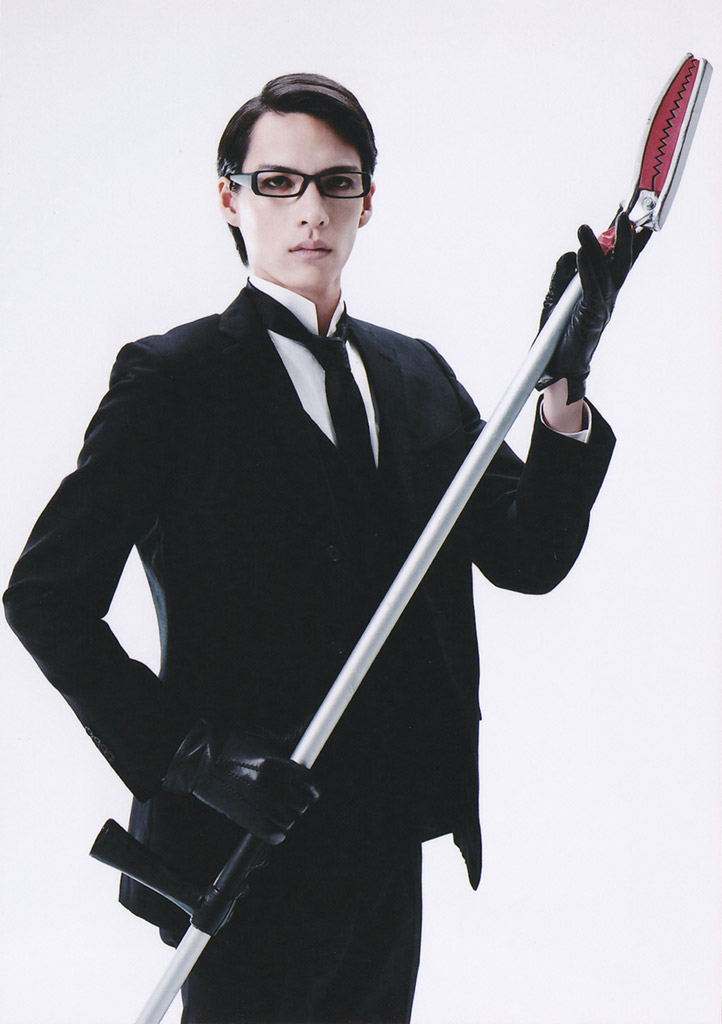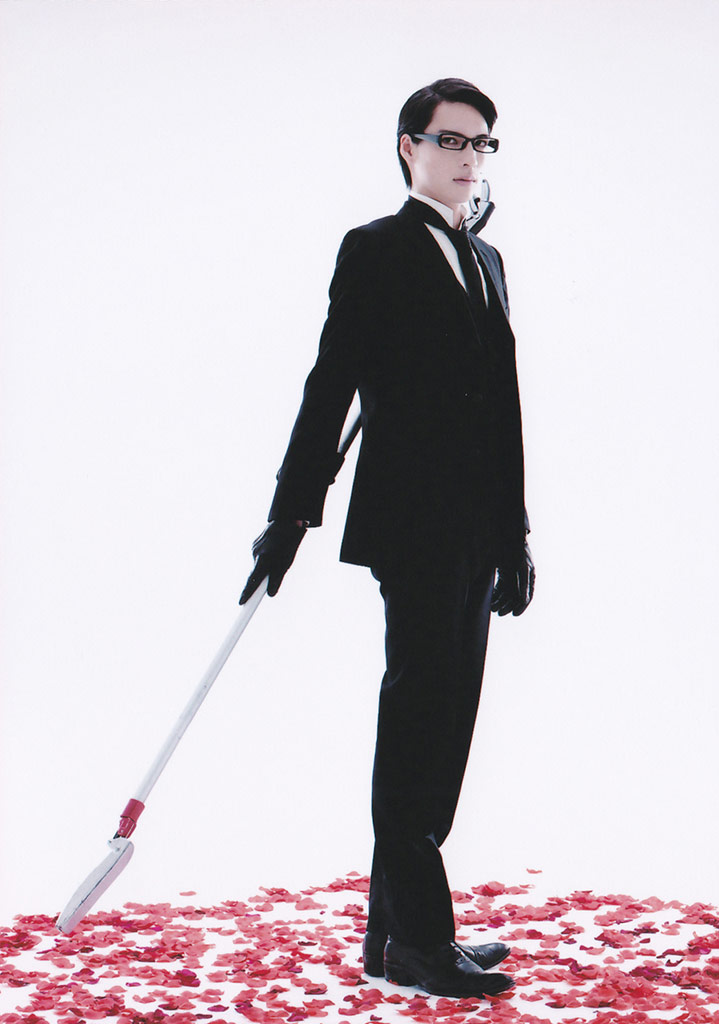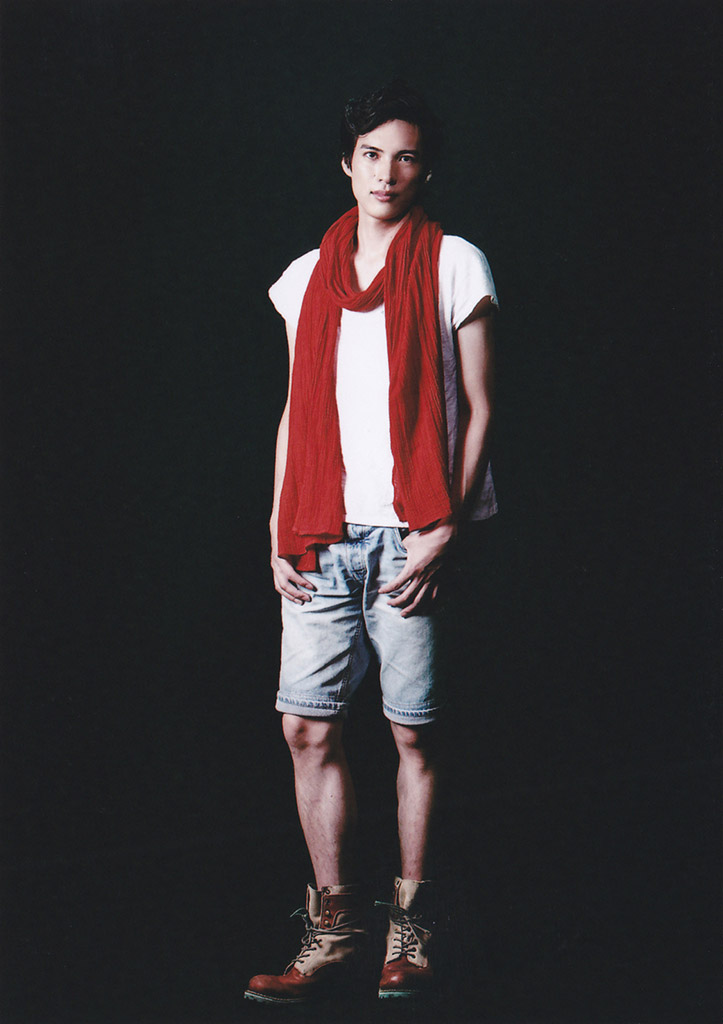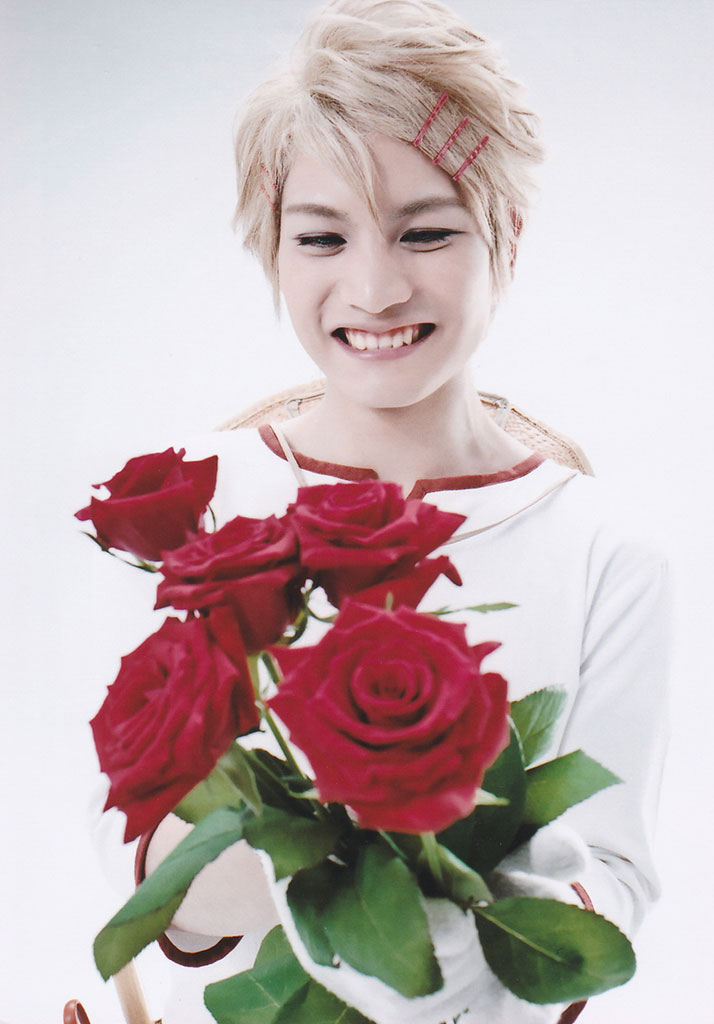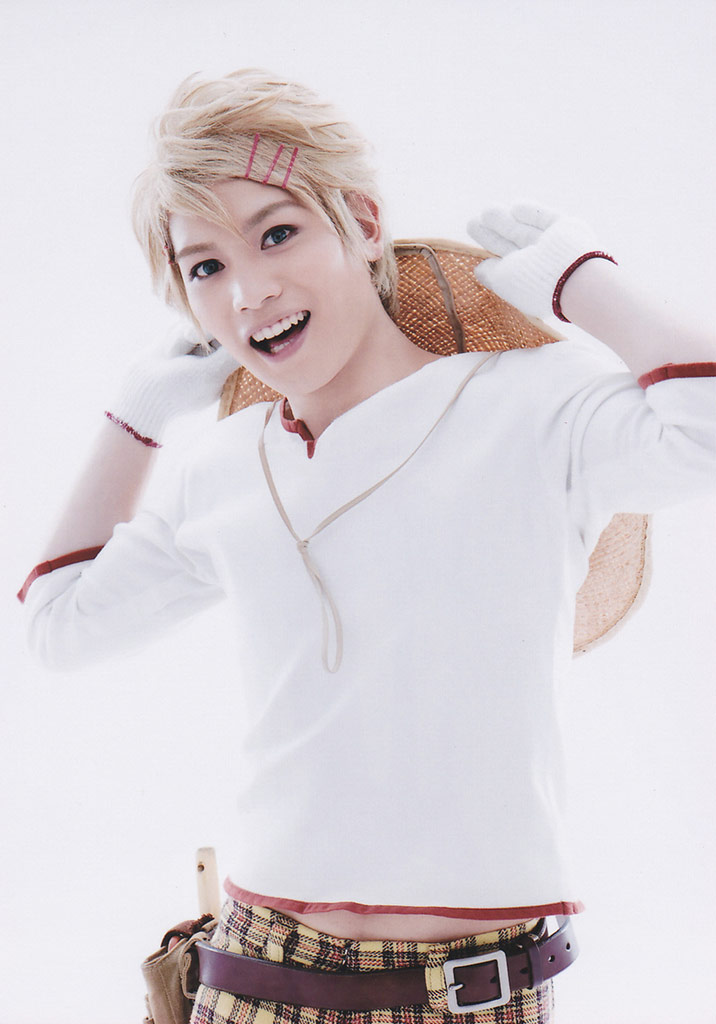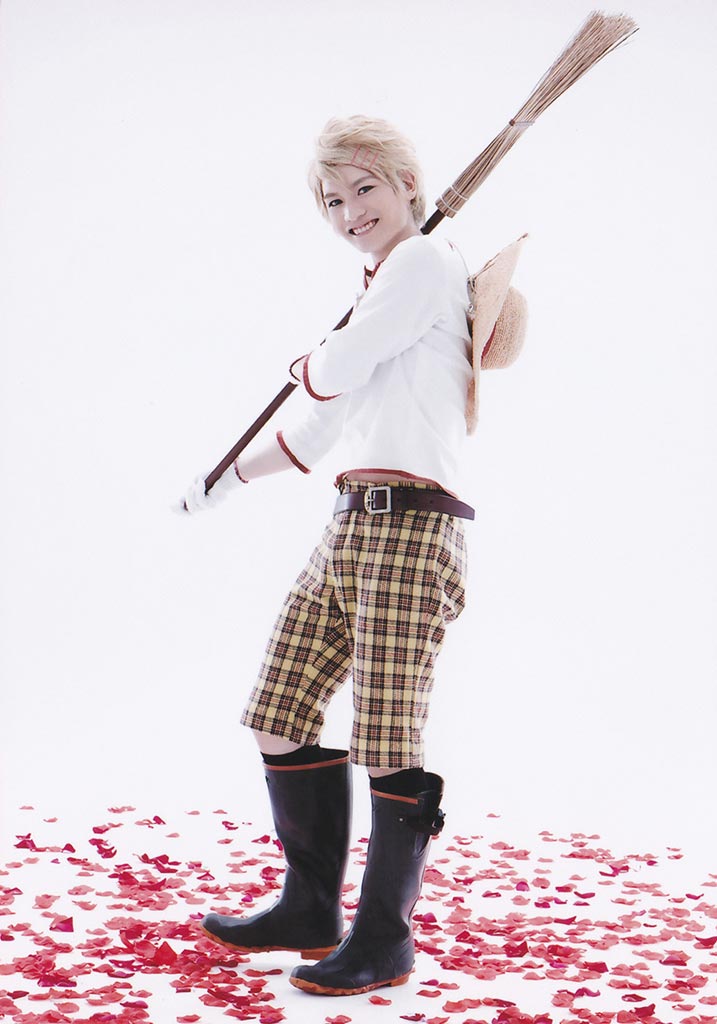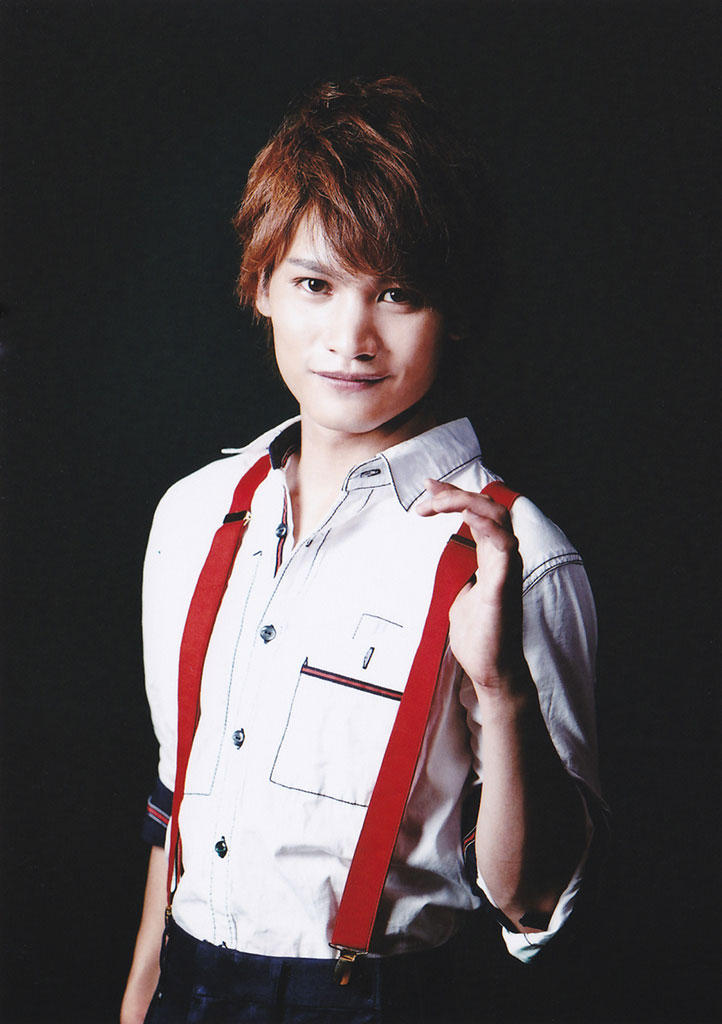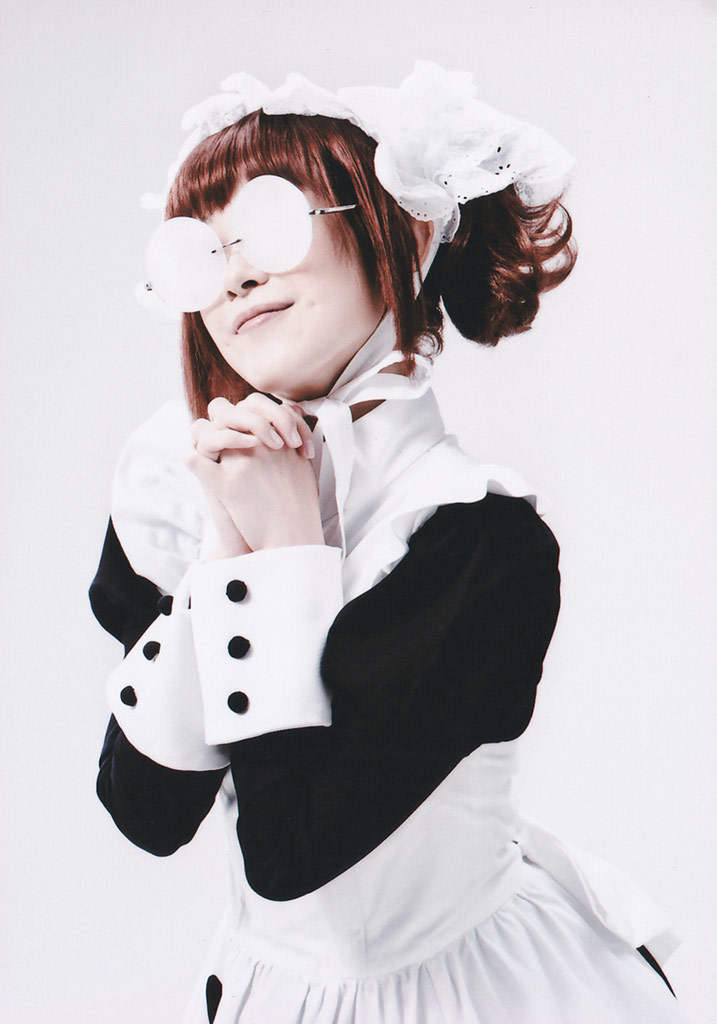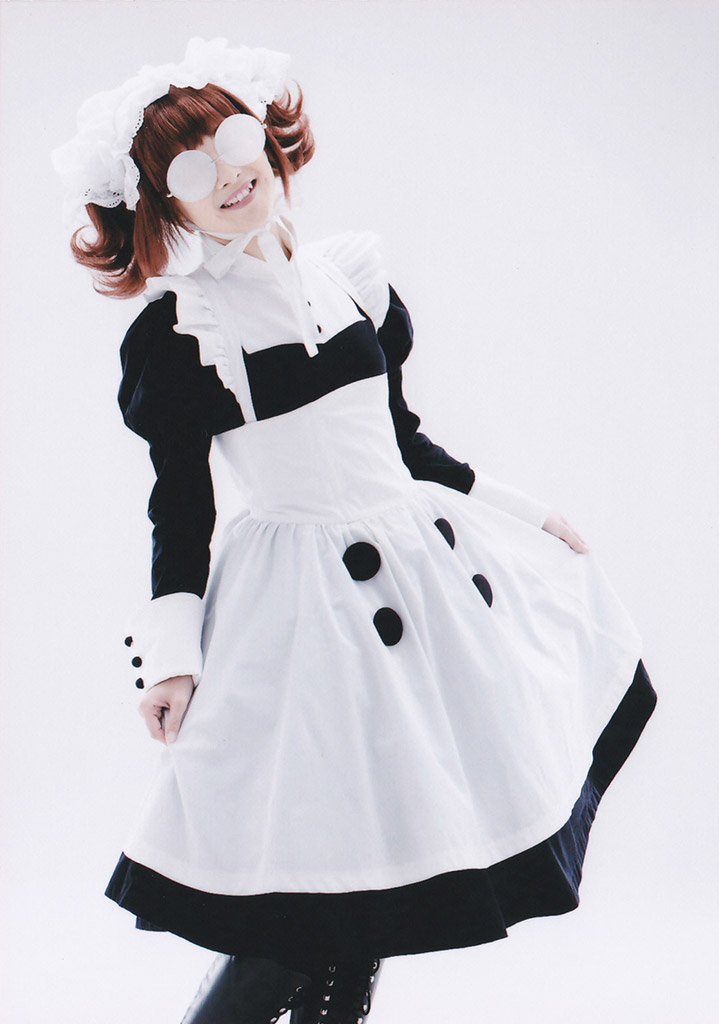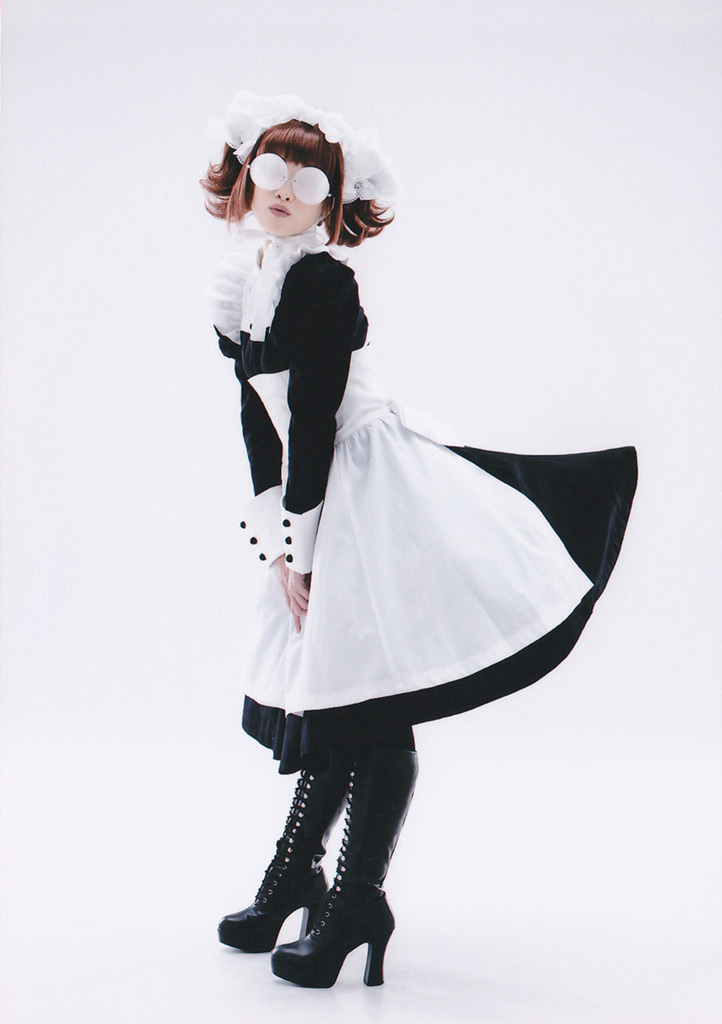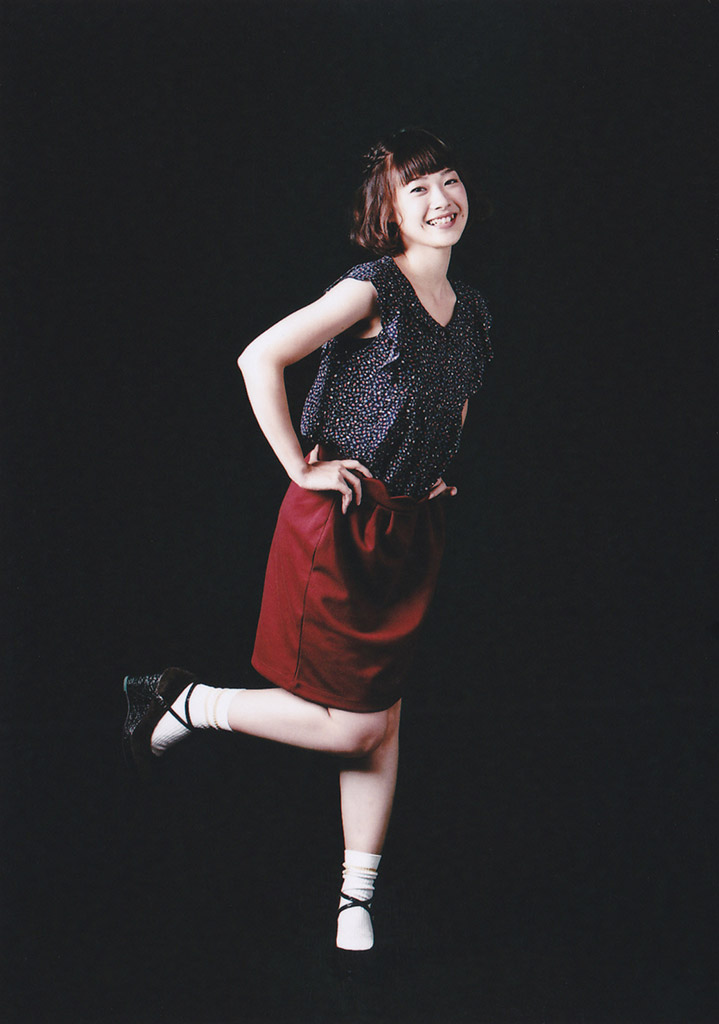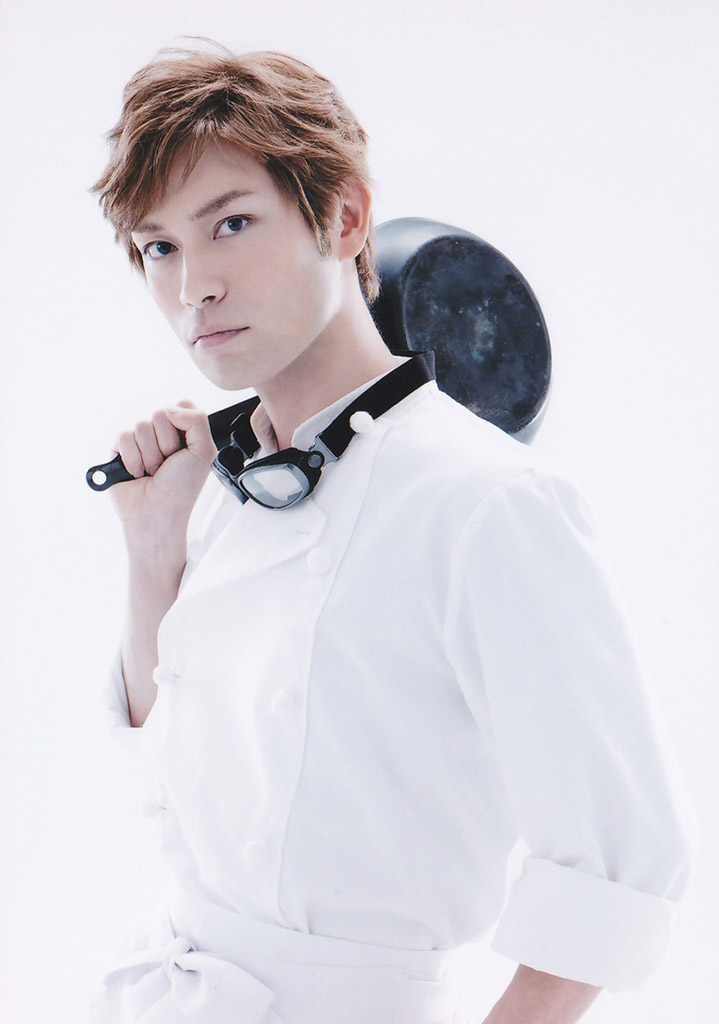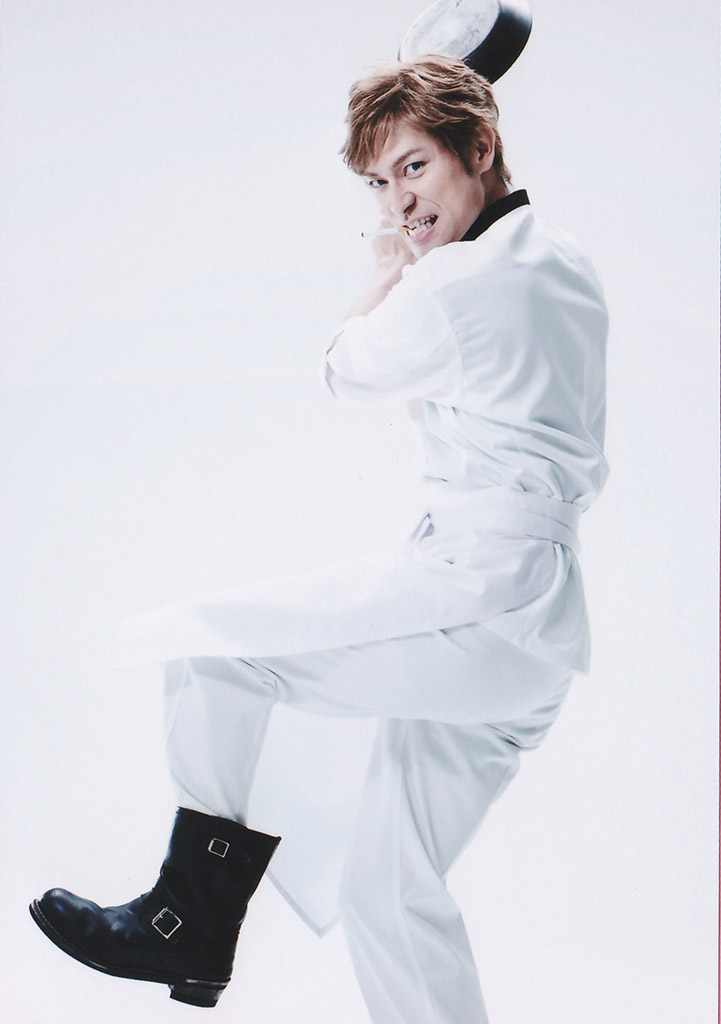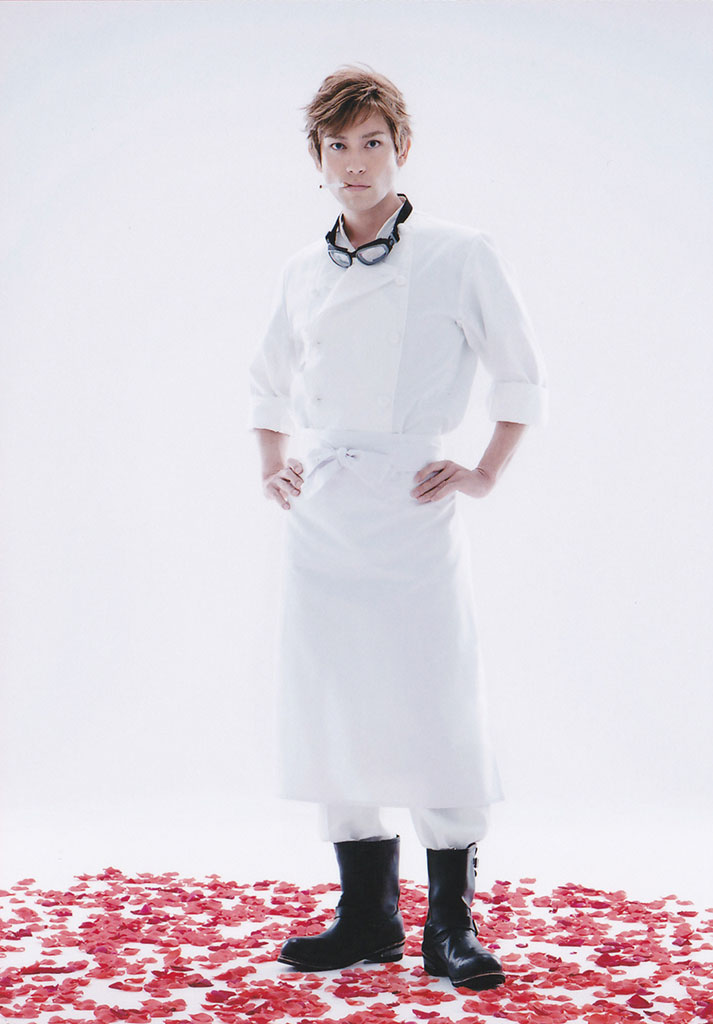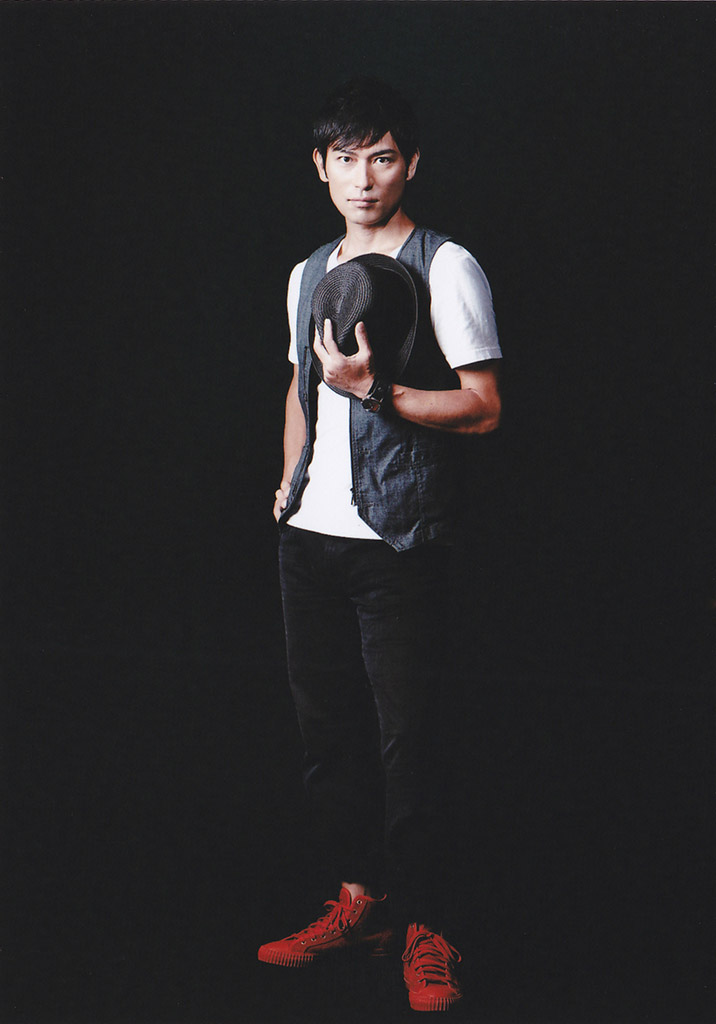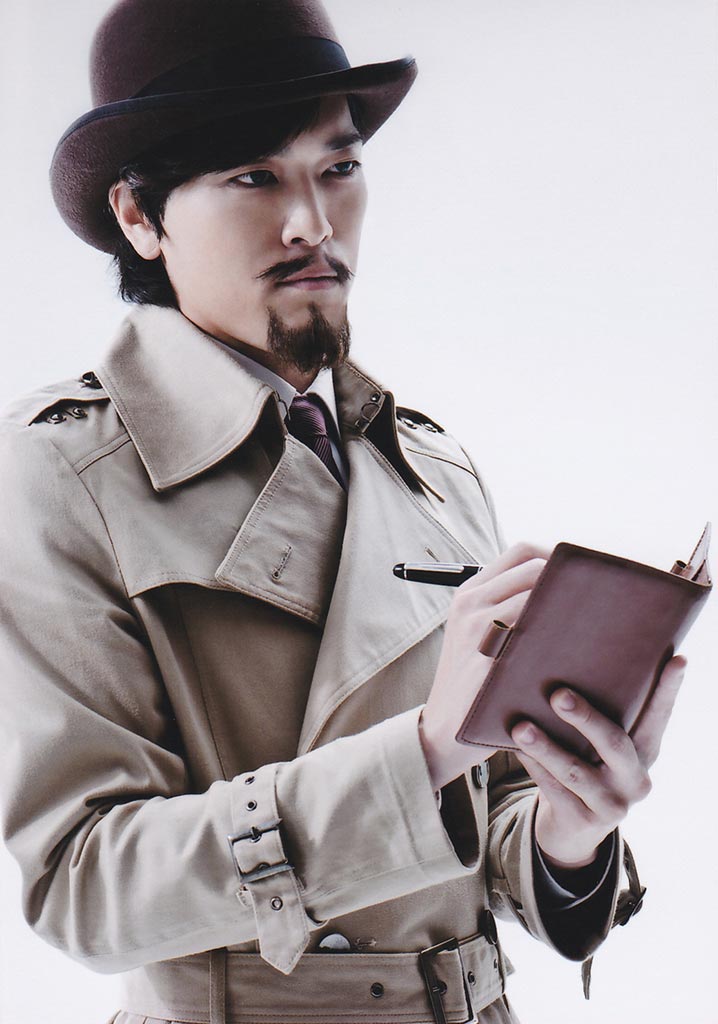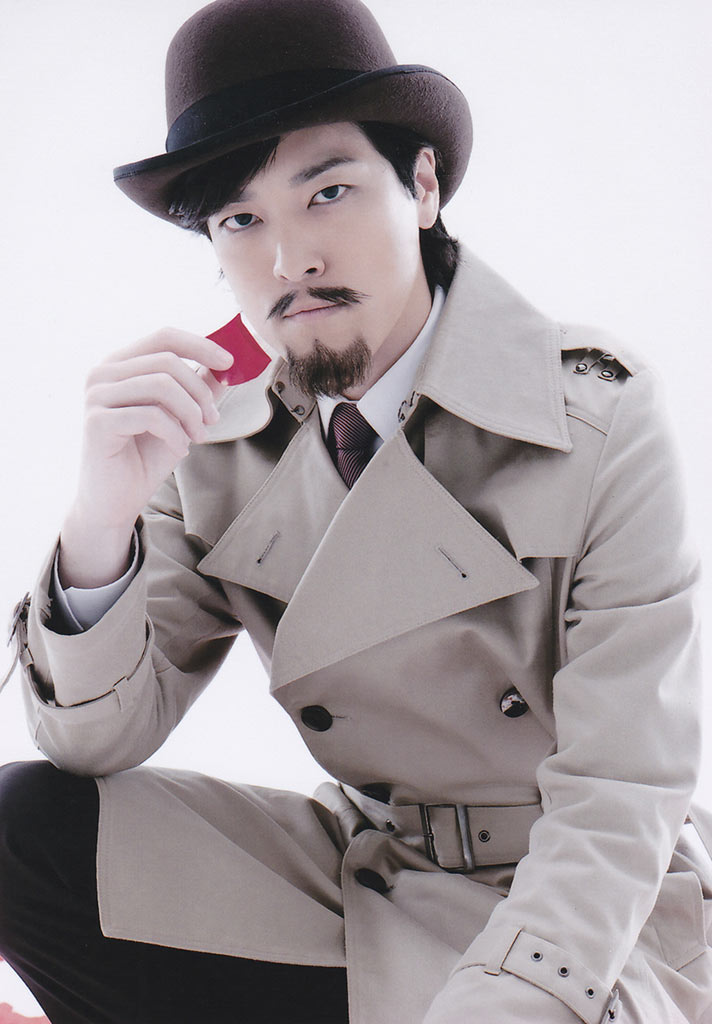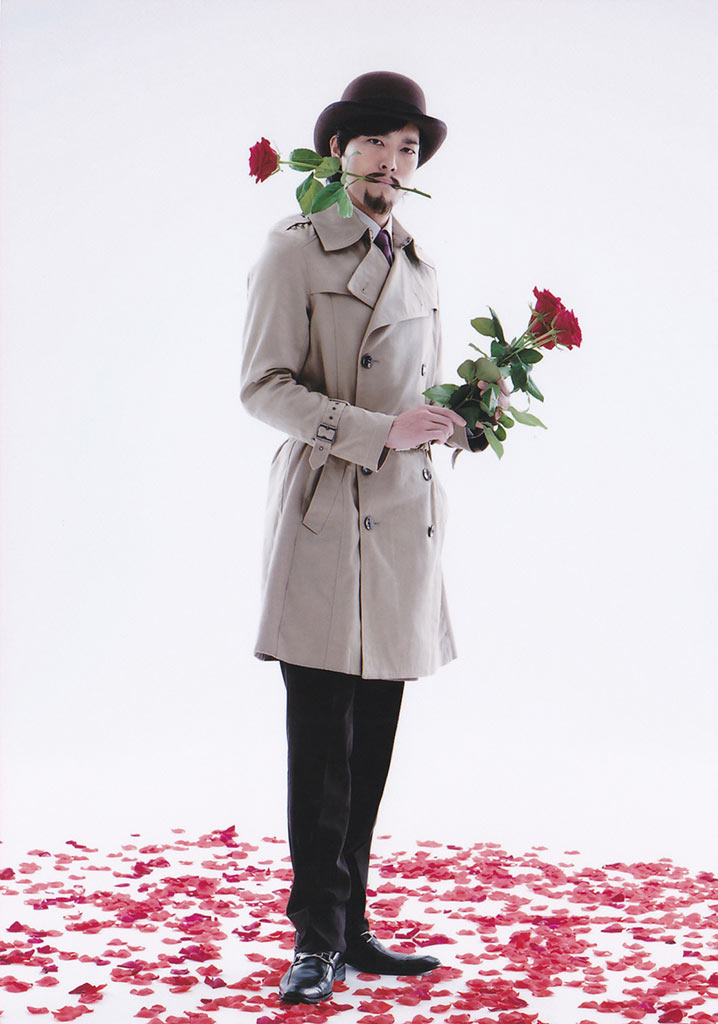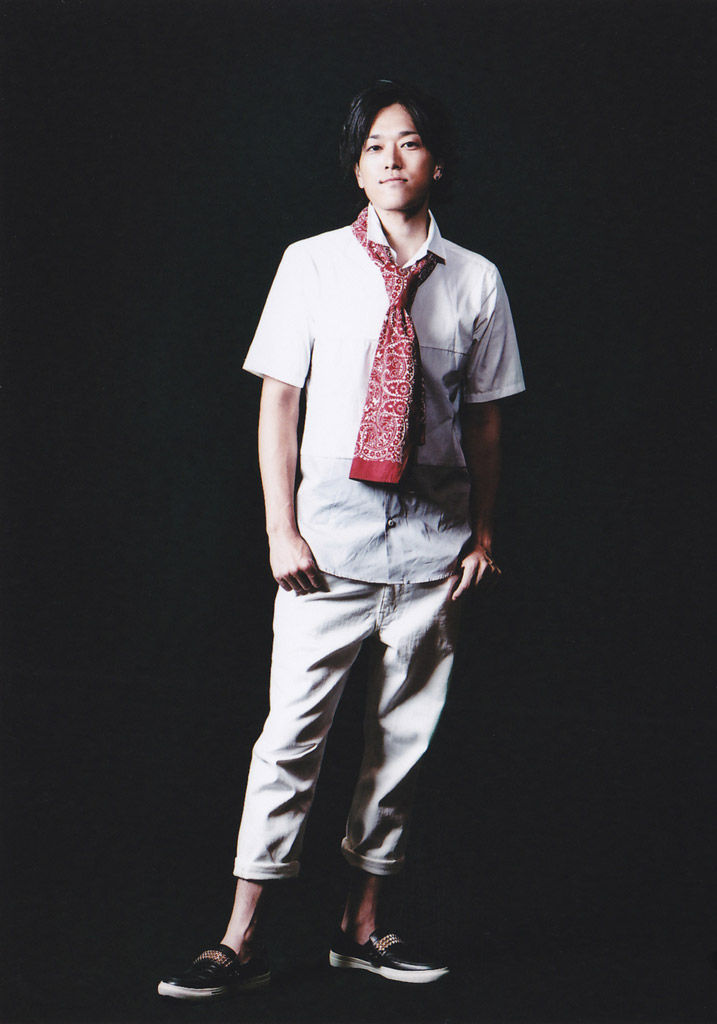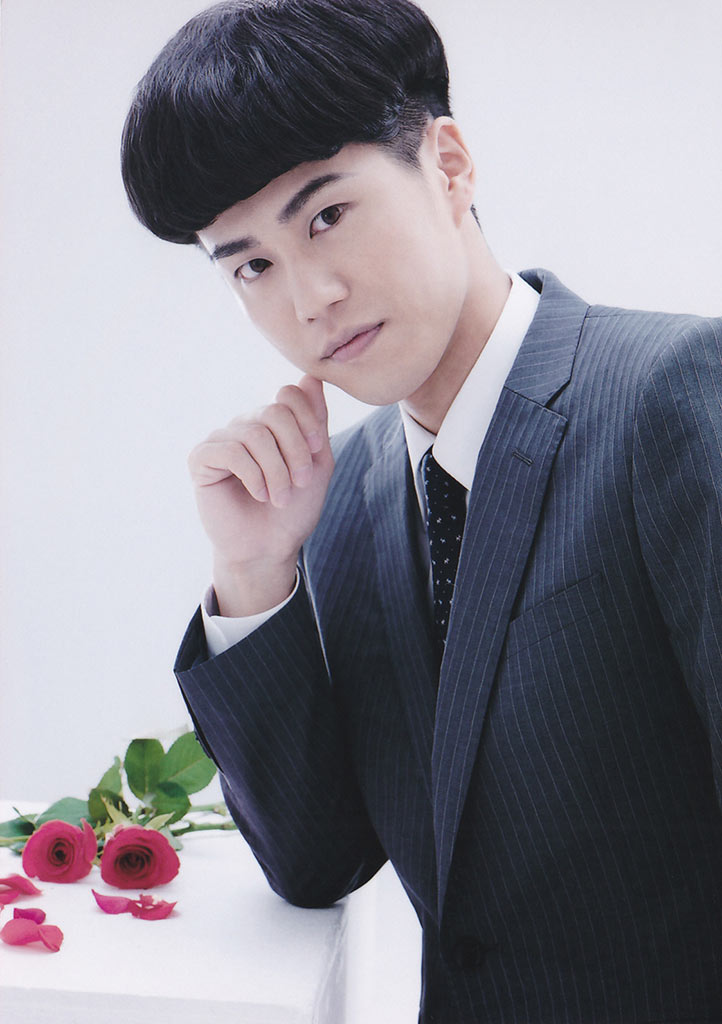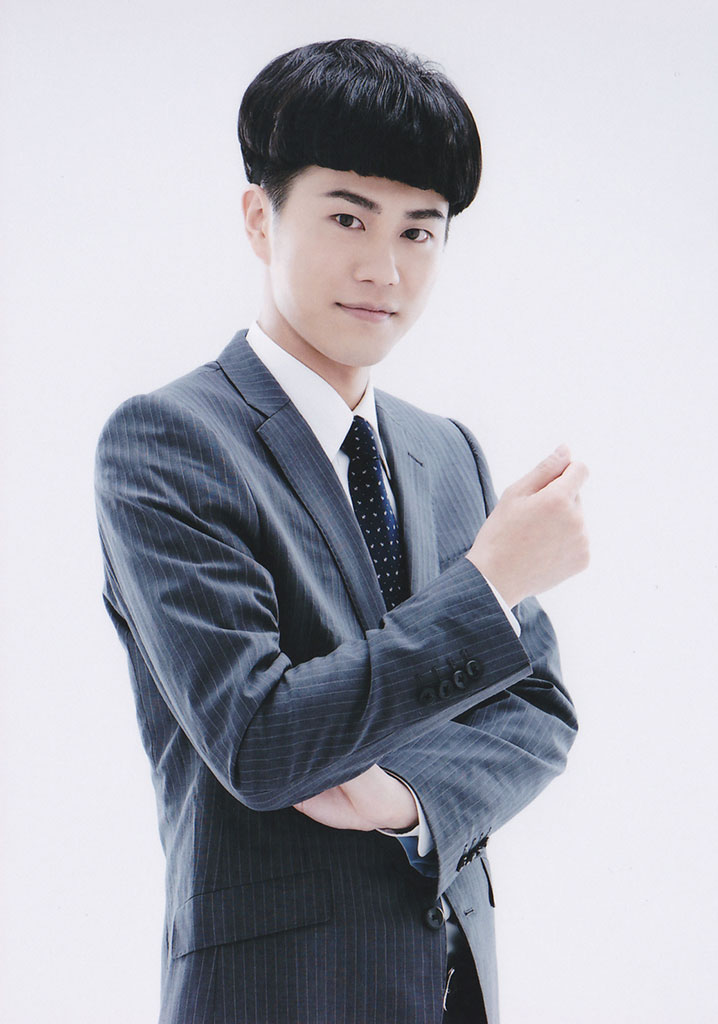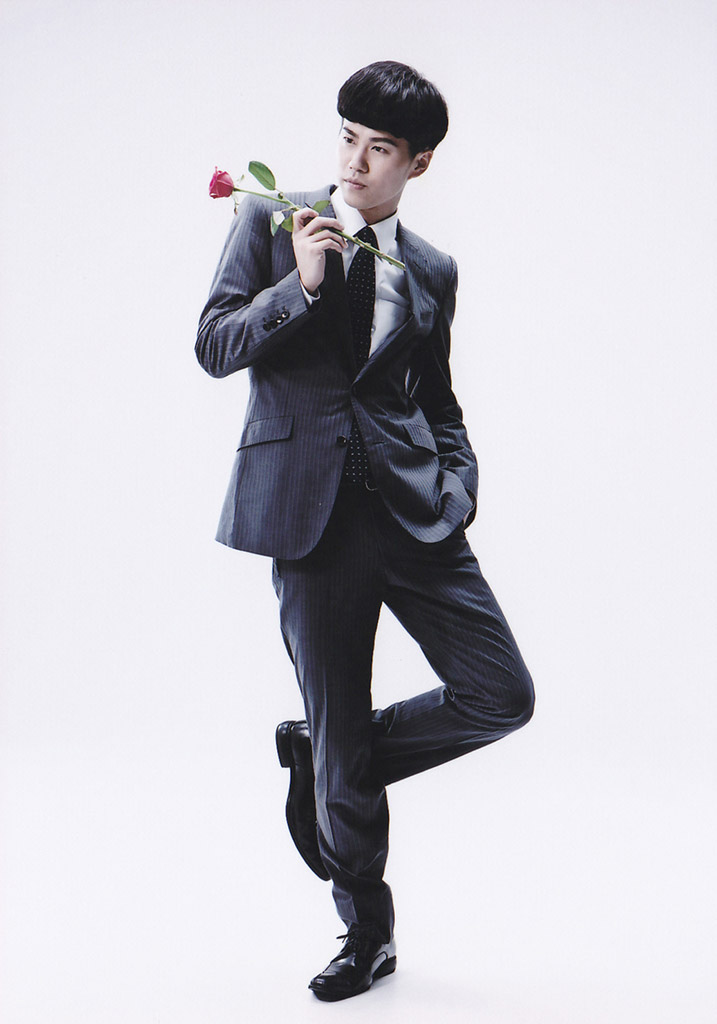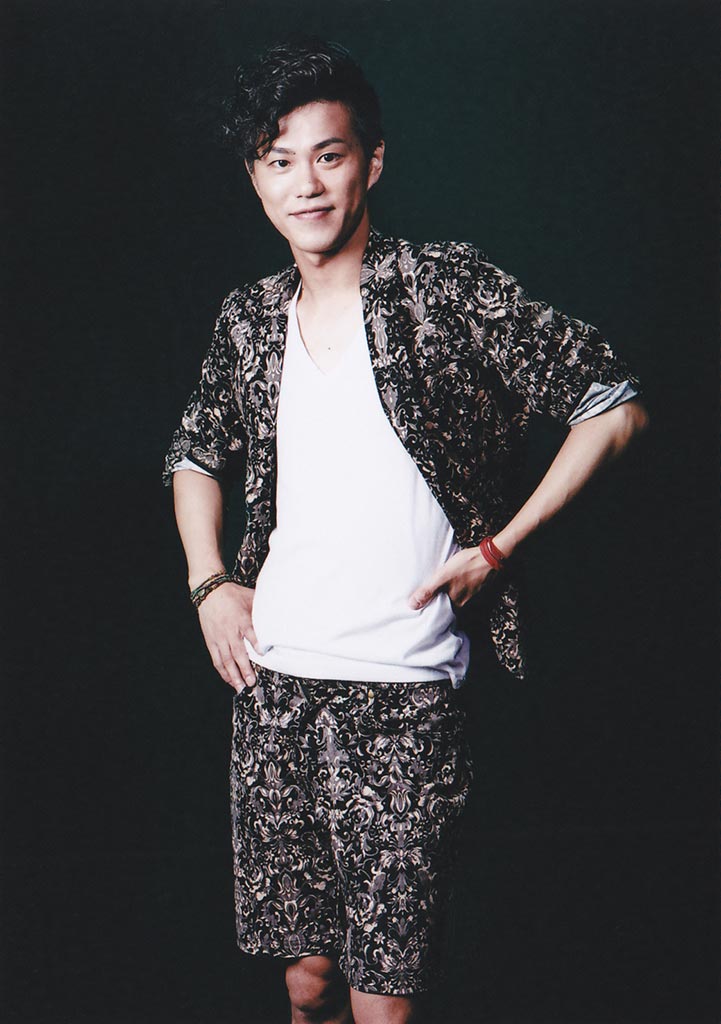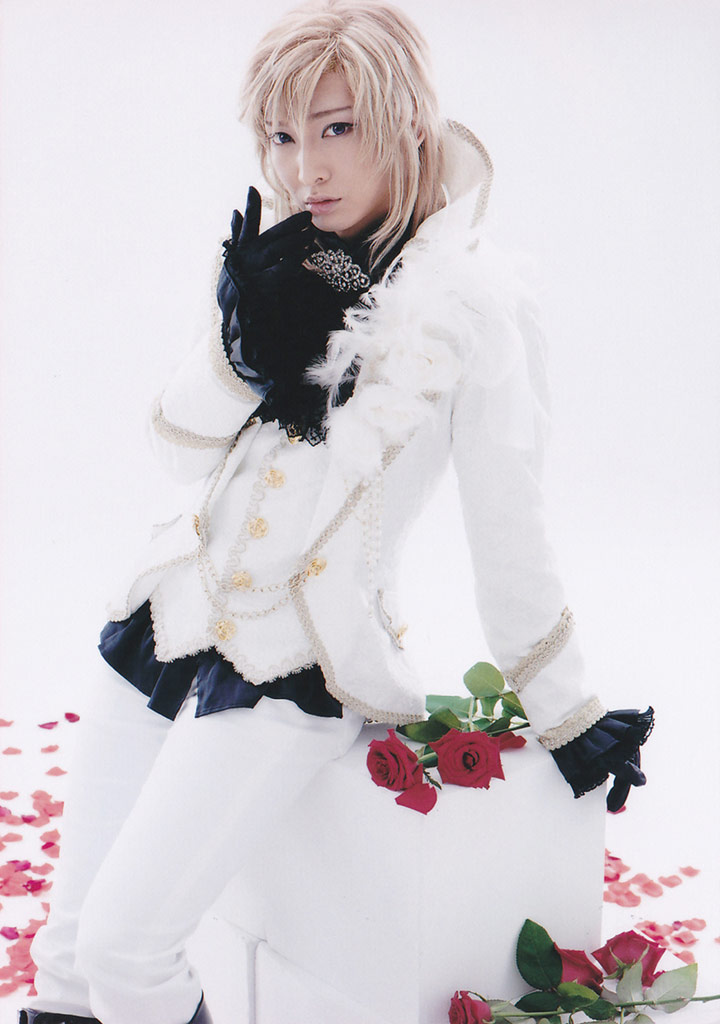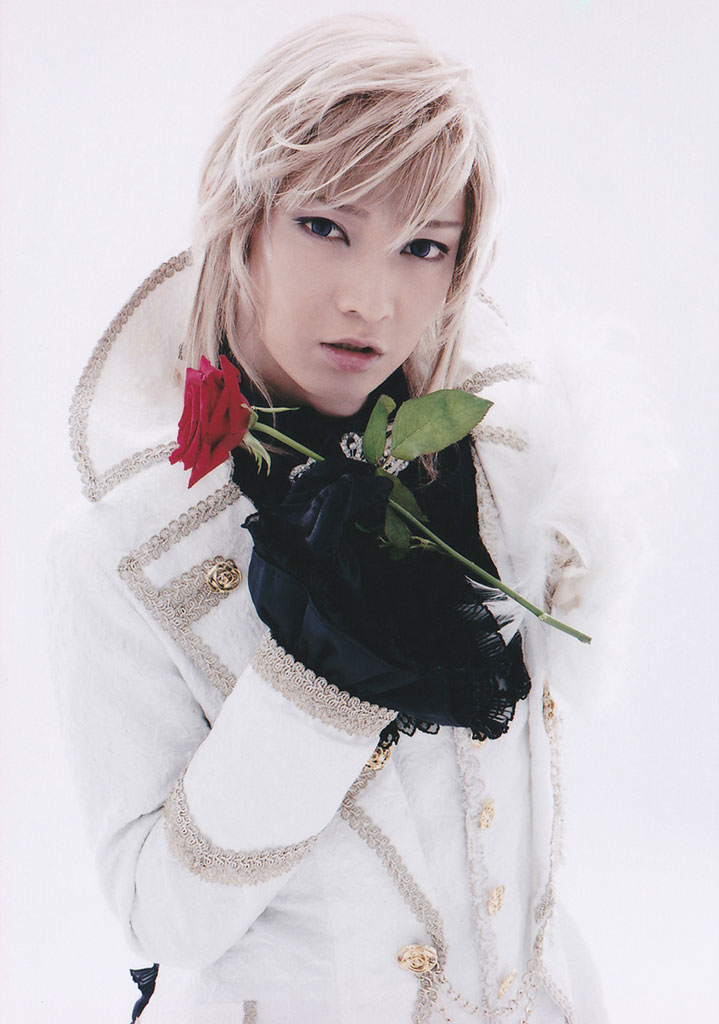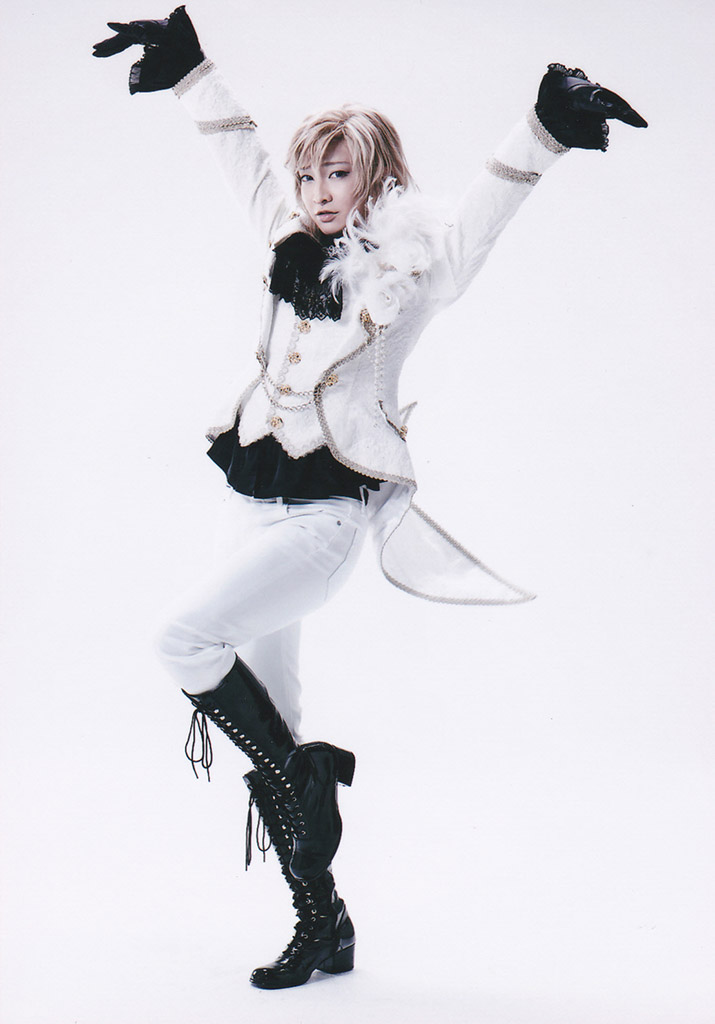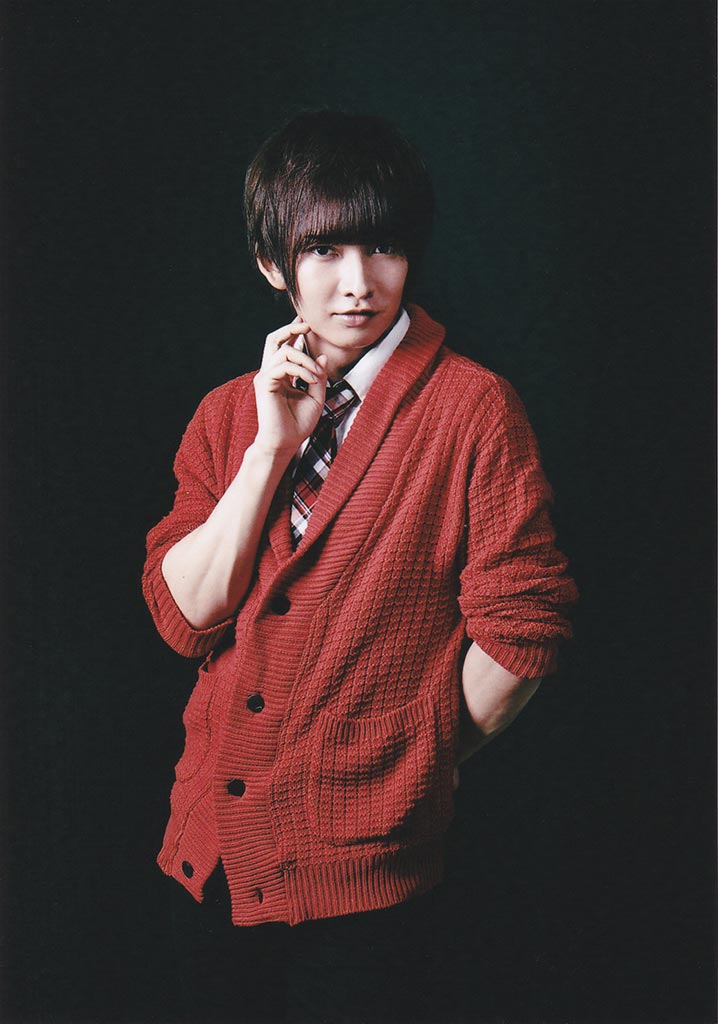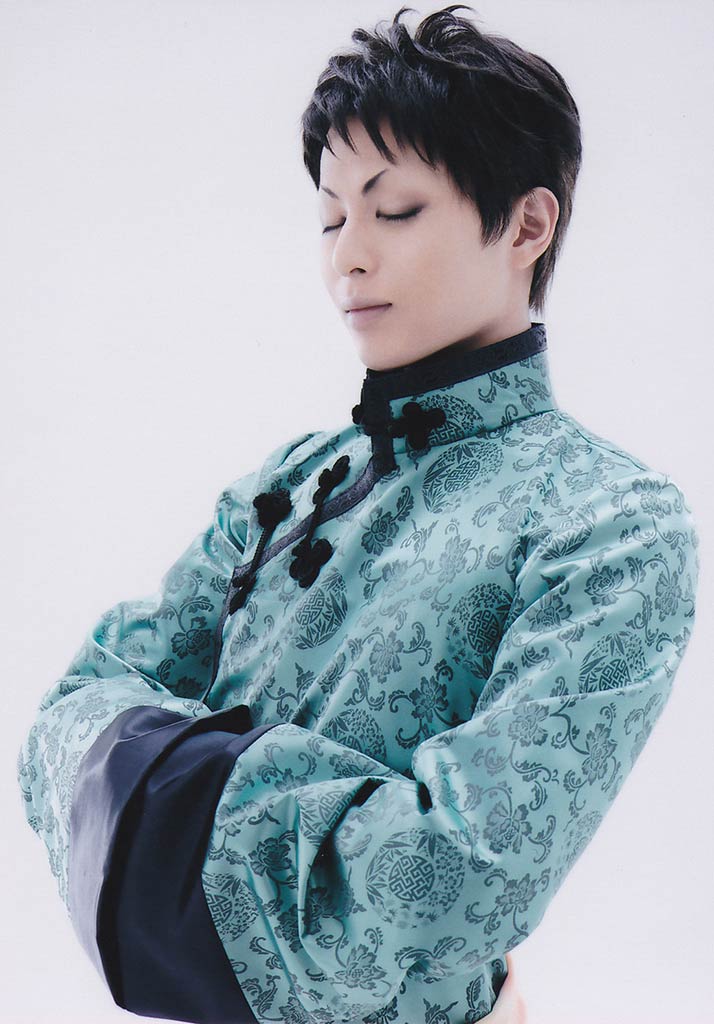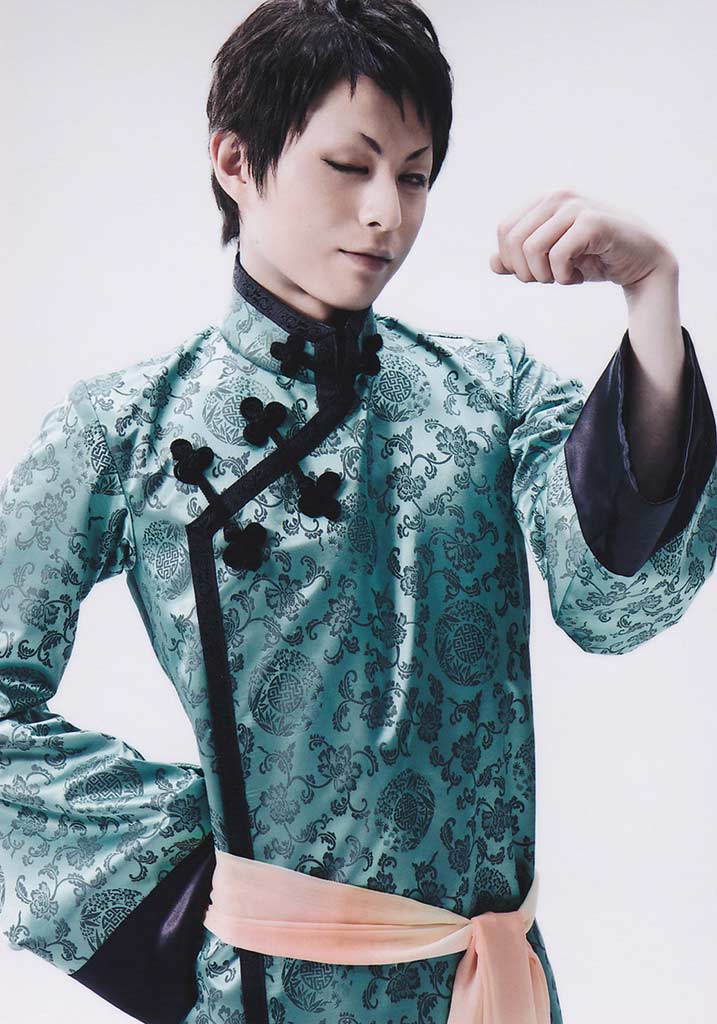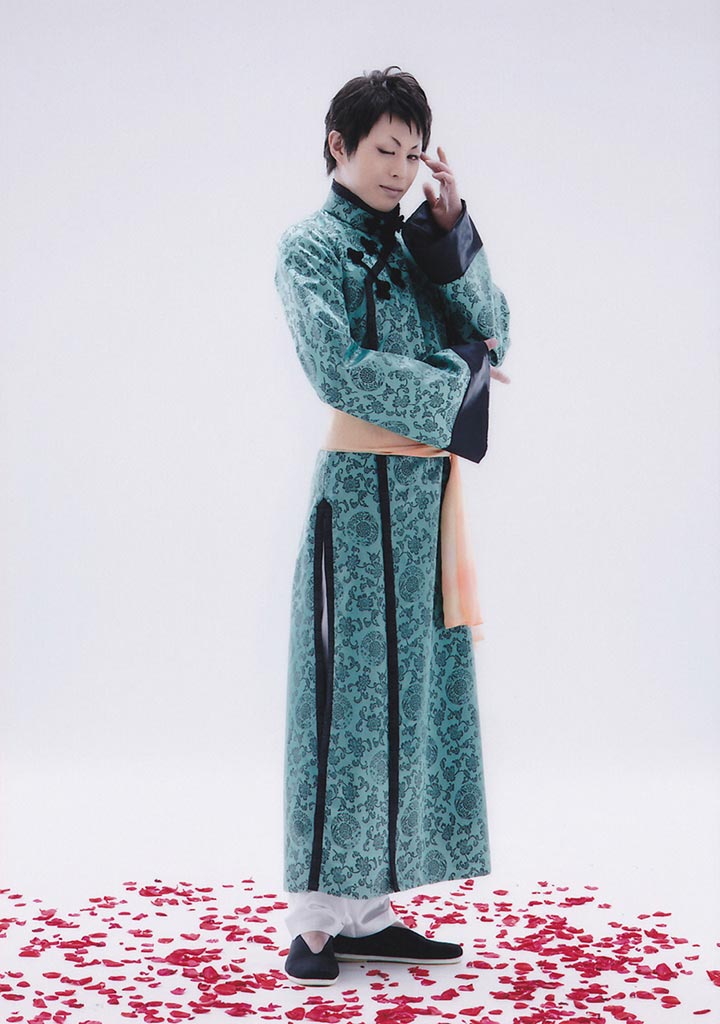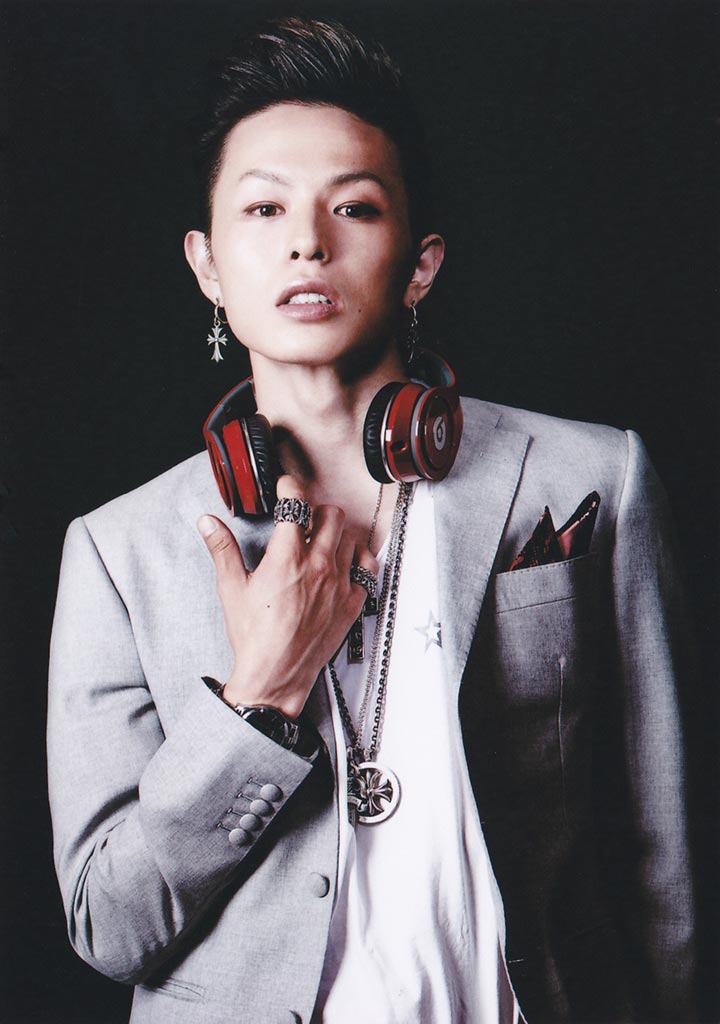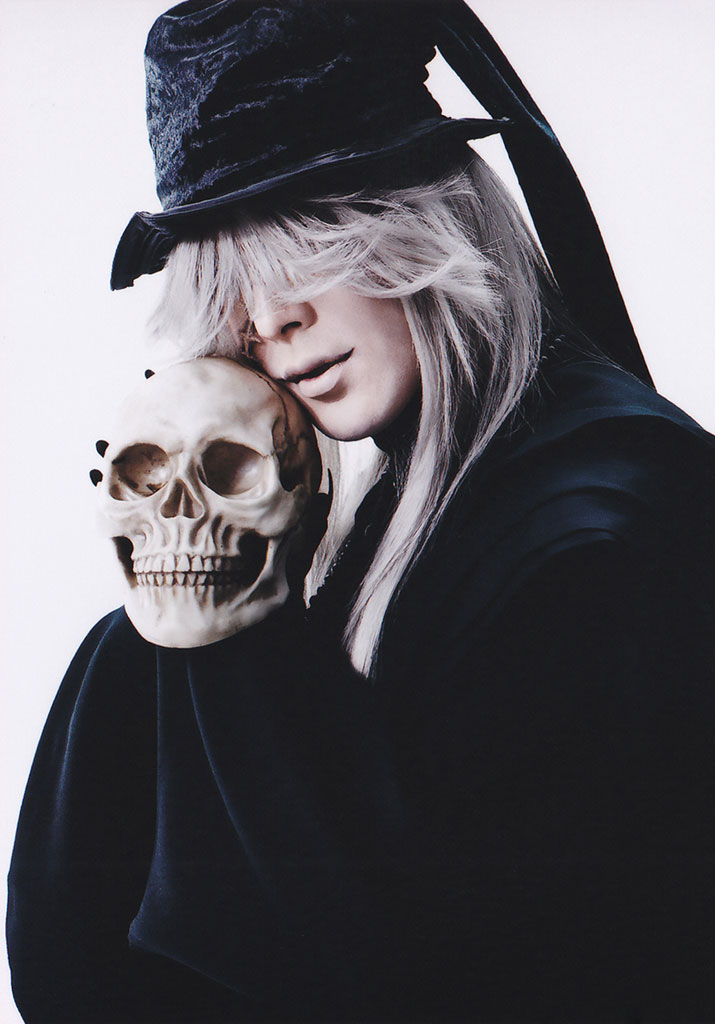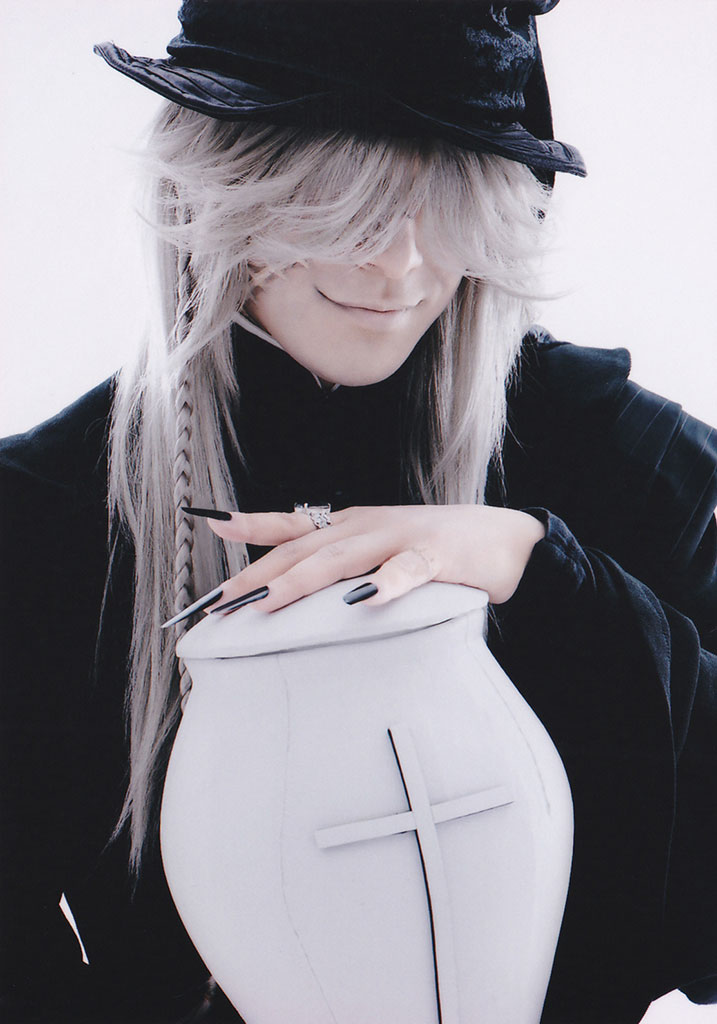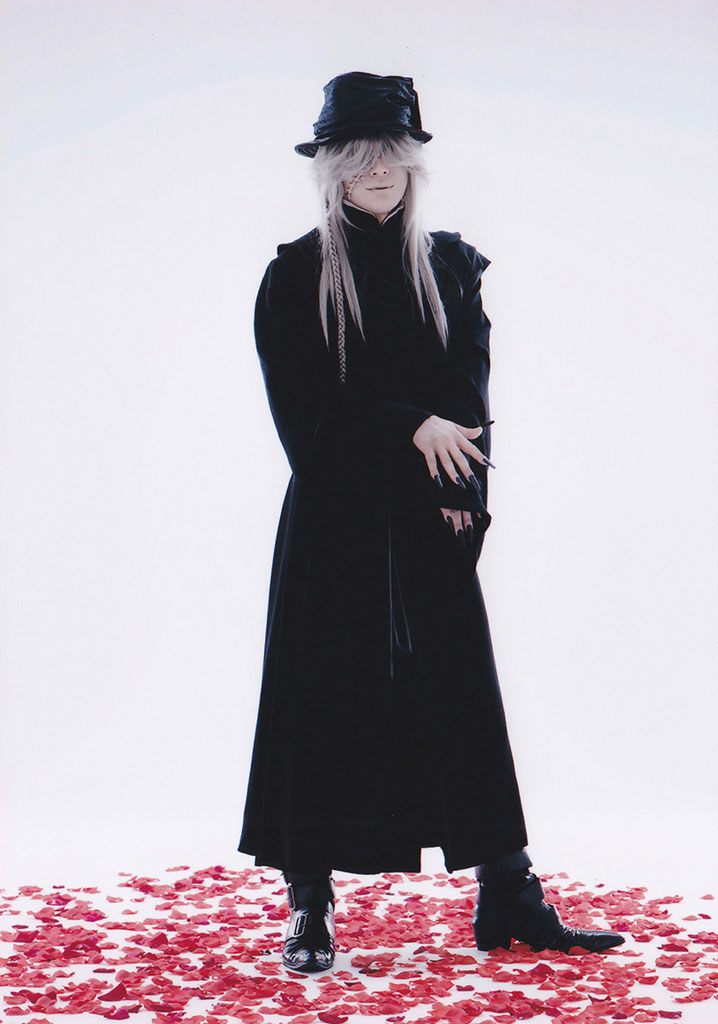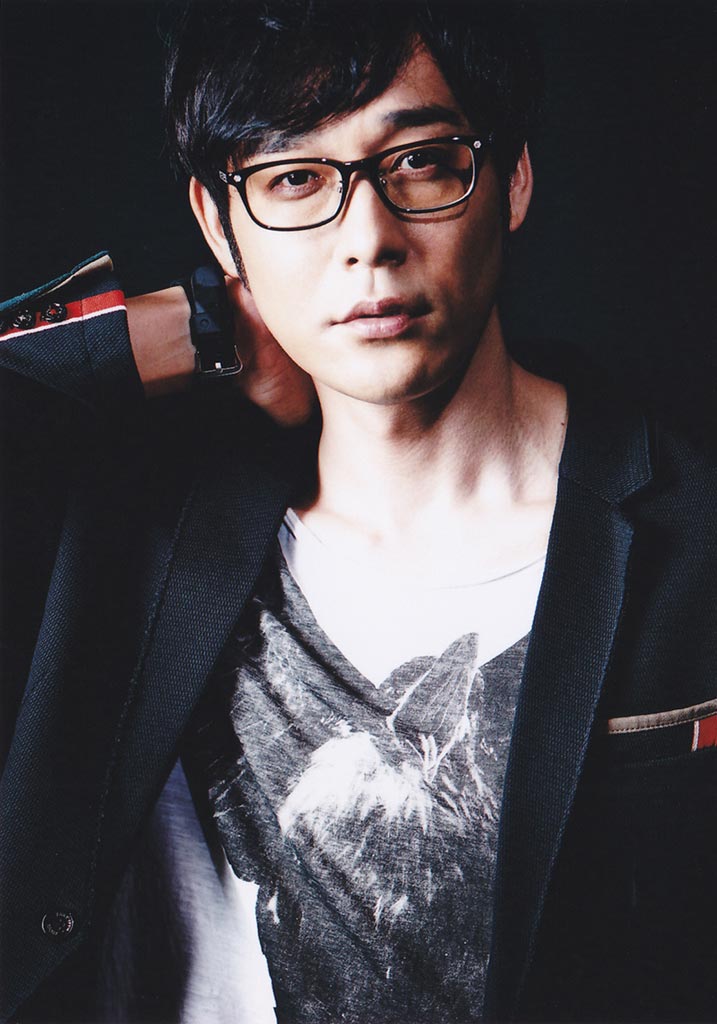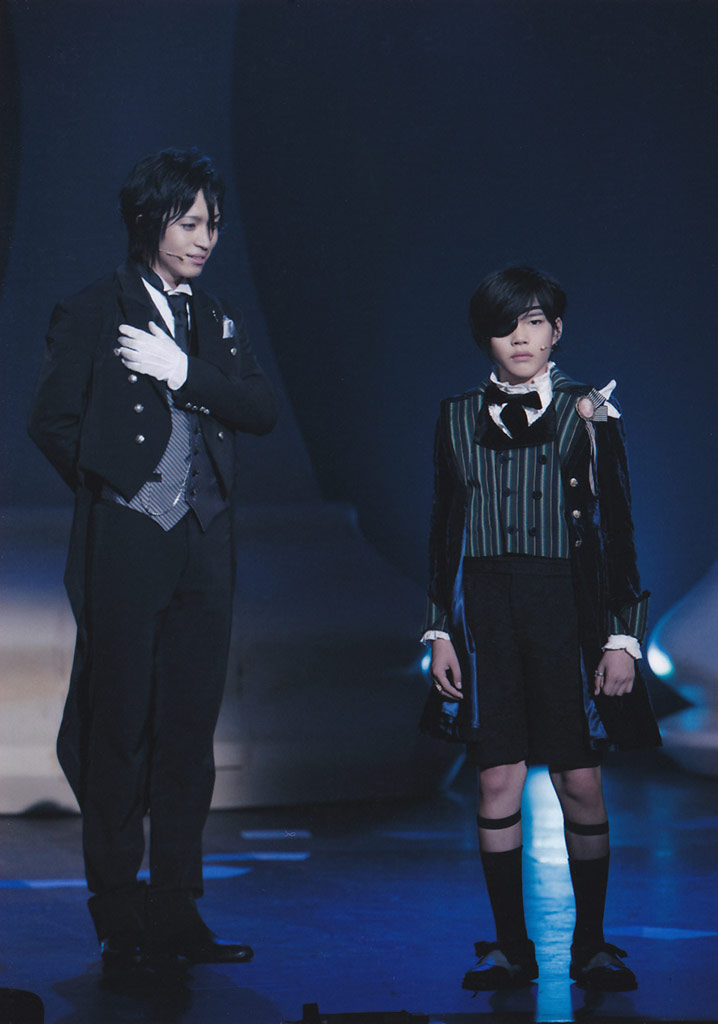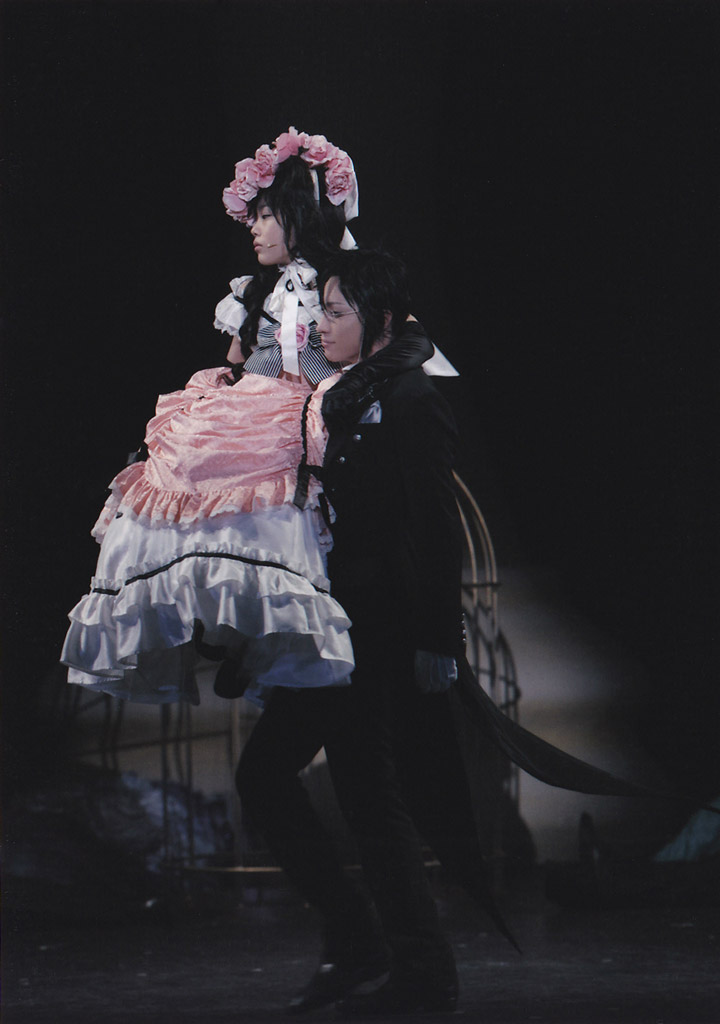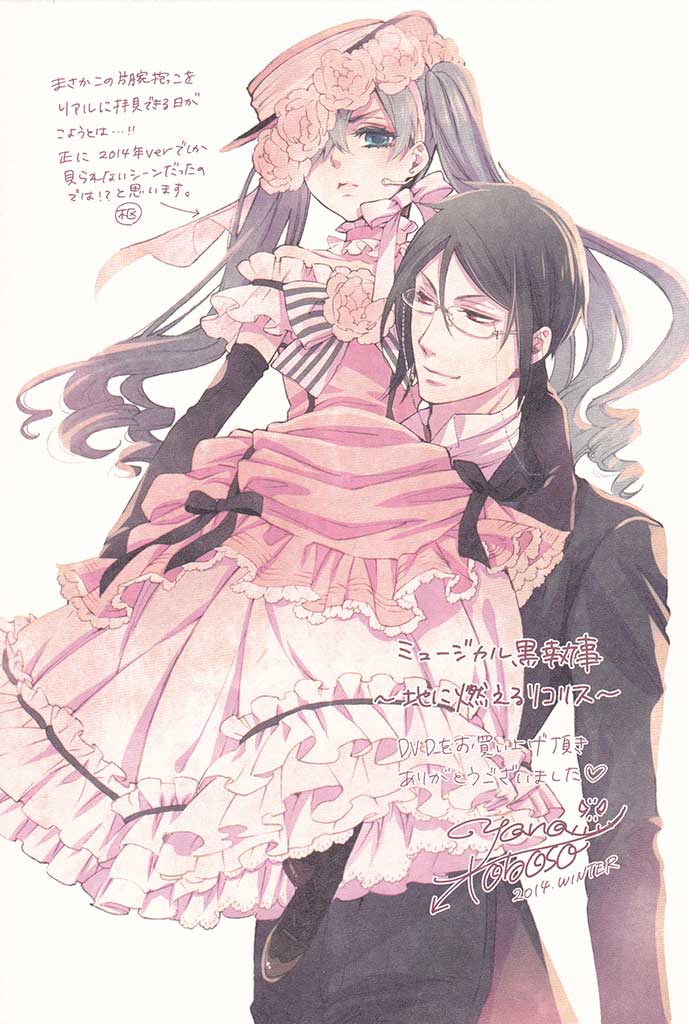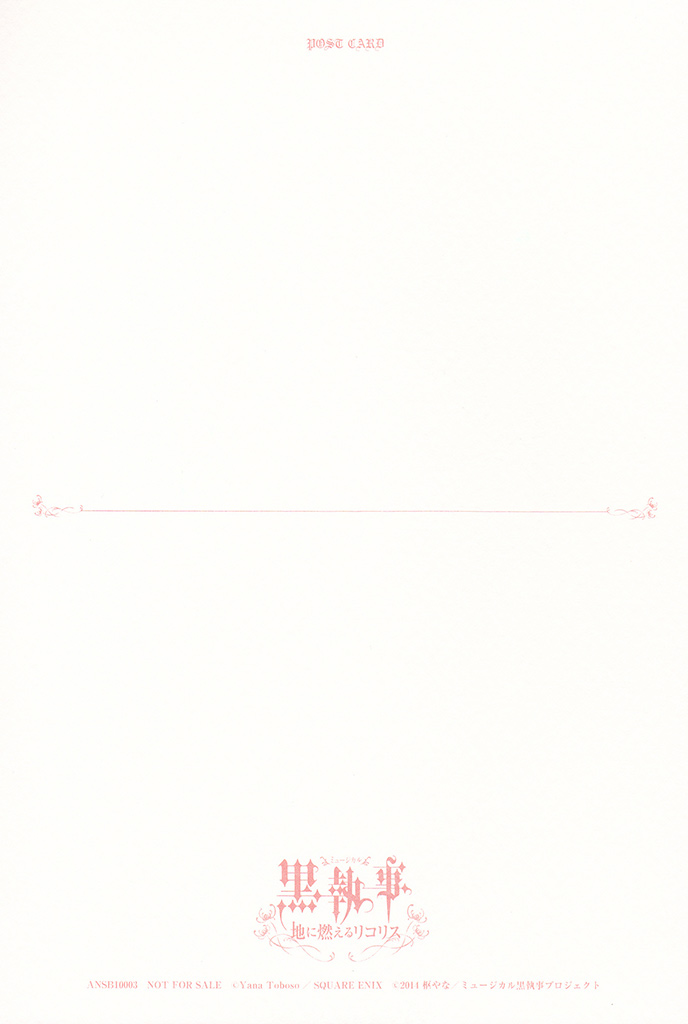Review: “Kuroshitsuji: Chi ni Moeru Rikorisu”
By Skywing Knights // July 12, 2023
Musicals in Japan are the best. Yeah, I said it. I LOVE musicals in Japan. They’re always fun, always exciting, always ingenuity, and always a blast to go to. Now don’t get me wrong, I didn’t discover musicals in Japan. I’ve always loved musicals. I was in a musical when I was 10 and have had a love for them ever since. But in Japan, musicals are just different. And different in a good way, let’s be clear.
If I had to say what makes them so different, I’d have to say it’s the sheer full amount of force and energy taken into portraying absolutely out-of-this-world stories, regardless of how off the wall they may be. And that’s why today I want to tell you about my absolute, favorite, best Japanese musical experience. That of the time I went to see “Kuroshitsuji: Chi ni Moeru Rikorisu” (黒執事:地に燃えるリコリス). Or in English, “Black Butler: Lycoris that Blazes the Earth”, the third musical adaptation of the manga “Black Butler” by Yana Toboso (枢やな).
 It probably comes as no surprise to anyone that I might have a tiny, teensy, little, bit of adoration for the manga Black Butler. (Or rather it’s Japanese title, Kuroshitsuji.) At this point, it’s the only one I’m still regularly reading. It’s also why there’s a small part of me torn up over the mangaka Yana Toboso’s time being split between her magnum opus and that of Disney’s Twisted Wonderland project. Both wonderful, mind you, but I need my Kuroshitsuji (黒執事) fix. (So, um, yes, more please!)
It probably comes as no surprise to anyone that I might have a tiny, teensy, little, bit of adoration for the manga Black Butler. (Or rather it’s Japanese title, Kuroshitsuji.) At this point, it’s the only one I’m still regularly reading. It’s also why there’s a small part of me torn up over the mangaka Yana Toboso’s time being split between her magnum opus and that of Disney’s Twisted Wonderland project. Both wonderful, mind you, but I need my Kuroshitsuji (黒執事) fix. (So, um, yes, more please!)

Yuya Matsushita Bromide from the 2014 run of “The Alucard Show”, attended by Yana Toboso.
I also though am a massive fan of Matsushita Yuya (松下優也), a singer and actor in Japan. (Previously, he was part of X4 and now under his own brand of “YOUYA”.) So when Yuya crosses paths with Kuroshitsuji, it’s a bit like that excitement of Christmas morning. Because I KNOW I’m in for a phenomenal treat. And this musical was to be no different.
Now, I realize this review is of a musical that debuted in 2014. I know this and I hope you’ll bear with me and indulge me a bit as I write this to both extol my favorite musical ever and Japanese musicals in general. And as a thank you to you for doing so, I am also including a special Bromide Gallery from this musical at the end of this review for you to see. (Bromides are limited edition photos only available for purchase on location at events, making all of these very exclusive and rare to see all in one place!). That said, let’s talk Kuroshitsuji. 😉
The Third Musical
 Before we get into this story though, here is a little backstory to this musical. Like I mentioned above, it was the third musical in the Kuroshitsuji Musical series. At the time though, it came as a surprise to many. The first musical had done moderately well. But it was the second musical that everyone fell in love with. The first struggled primarily with writing and finding the best beats to bring from the manga into a live action adaptation. However, the second Kuroshitsuji musical took all of those things and ran with it. This netted it a second performance run. These Kuroshitsuji musicals were also the first time many actors would be cast in these recurring roles. And Yuya, relatively unknown at the time of the first musical, landed the lead. Bless all our lucky stars.
Before we get into this story though, here is a little backstory to this musical. Like I mentioned above, it was the third musical in the Kuroshitsuji Musical series. At the time though, it came as a surprise to many. The first musical had done moderately well. But it was the second musical that everyone fell in love with. The first struggled primarily with writing and finding the best beats to bring from the manga into a live action adaptation. However, the second Kuroshitsuji musical took all of those things and ran with it. This netted it a second performance run. These Kuroshitsuji musicals were also the first time many actors would be cast in these recurring roles. And Yuya, relatively unknown at the time of the first musical, landed the lead. Bless all our lucky stars.
 My arrival in Japan was in January 2014 though, after the first two Kuroshitsuji musicals both had their runs. Kuroshitsuji continued to be popular in Japan, so much so that as I arrived, there was a live action film adaptation of the series. (Sadly though, this adaptation was um… a disappointment to many fans to put it kindly). Additionally, the anime adaptation had recently been discontinued. It had quickly caught up to the manga at the time and went off in its own, again, not as well received direction.
My arrival in Japan was in January 2014 though, after the first two Kuroshitsuji musicals both had their runs. Kuroshitsuji continued to be popular in Japan, so much so that as I arrived, there was a live action film adaptation of the series. (Sadly though, this adaptation was um… a disappointment to many fans to put it kindly). Additionally, the anime adaptation had recently been discontinued. It had quickly caught up to the manga at the time and went off in its own, again, not as well received direction.

The Original Japanese Manga
Meanwhile, though the musicals, particularly the second, were very enjoyable, the side story and somewhat zanny, even unnecessary antics seen in the first two musicals made another Kuroshitsuji musical adaptation seem unlikely. It seemed better for “Kuroshitsuji” to accept the moderate success and to not “fix what’s not broke”. In short, many thought it best to just let the first two musicals be.

And honestly, while that was disappointing to me, I was fine with it. After all, I could still read the manga and I could still see Yuya in other performances. And I did! The first time I saw him was in the Broadway musical “In The Heights”. A fantastic show. Wonderfully fantastic. Straight from the mind of “Hamilton”’s and “Encanto”’s Lin-Manuel Miranda. And it came with a series of handouts right before the show. And it was then, scanning through the pamphlets that I saw it.
“Kuroshitsuji Musical: New Production”
I blinked several times and I got out my translator to make sure I was reading it correctly. I was. That was the first announcement of the new show. And looking up at the stage upon which “In The Heights” was soon to start for me, I realized what every fan of Yuya’s sitting in that same theater must have realized as well. He had to be reprising his role, that of the lead: the demonic Sebastian Michaelis.
 And I was PSYCHED.
And I was PSYCHED.
I left “In The Heights” thoroughly impressed, with an over the moon kind of joy from the experience. But needless to say, I was also looking forward to the possibility of getting to see a Kuroshitsuji musical live.
 A possibility, I might add, that soon came to be a reality. Though at the time, I was unsure it would. Given that the series was so popular, I expected that getting tickets would be difficult. However, one of the perks of joining a fanclub was that you got first dibs on ticket raffle sales. And well… I might be a long time member, SO. I entered the raffle and was rewarded with a ticket that I promptly picked up from 7-Eleven. (And yes, that’s a thing in Japan. You can pick your tickets up at your local convenience store.) 8,500 yen later and it was mine! The performance I was scheduled to go to was on September 15th, 2014 at 1 PM. (Doors open at 12:30). My seat was #21 in row 6 at the Blue Theater in the Roppongi District (六本木) of Tokyo (東京).
A possibility, I might add, that soon came to be a reality. Though at the time, I was unsure it would. Given that the series was so popular, I expected that getting tickets would be difficult. However, one of the perks of joining a fanclub was that you got first dibs on ticket raffle sales. And well… I might be a long time member, SO. I entered the raffle and was rewarded with a ticket that I promptly picked up from 7-Eleven. (And yes, that’s a thing in Japan. You can pick your tickets up at your local convenience store.) 8,500 yen later and it was mine! The performance I was scheduled to go to was on September 15th, 2014 at 1 PM. (Doors open at 12:30). My seat was #21 in row 6 at the Blue Theater in the Roppongi District (六本木) of Tokyo (東京).
The Blue Theater
I honestly wasn’t sure I’d be able to wait. But somehow I managed and the day finally came. Getting there took a while as I went by train. Eventually though I got off at Azabujuban station (麻布十番駅) and made my way to the theater. I was early, so I waited at a Tsutaya nearby. While there, I met two of my friends who were also able to get tickets for the same day. And with that, we made our way up to the entrance where already a line had formed for entry.
 Eventually making our way to the front, we handed over our tickets and were promptly handed a sheet of paper offering pre-orders for the DVDs. Before going to our seats, we hit up the ‘Goods’ line along with the pre-paid goods line. Goods Lines in Japan are notoriously long and you must get there early for them if you want to have a shot of getting what you want. Knowing this, I decided to pre-order most of my goods as it was amazingly an option this time around. After I got my pre-ordered merchandise, I rejoined my friends in the regular goods line to get the items unavailable for pre-order along with some ‘unknown pins’ (they didn’t stay unknown for long though as I quickly opened them to reveal their contents). To my delight, I was able to get everything I wanted this way. Now there’s a pro-tip for you!
Eventually making our way to the front, we handed over our tickets and were promptly handed a sheet of paper offering pre-orders for the DVDs. Before going to our seats, we hit up the ‘Goods’ line along with the pre-paid goods line. Goods Lines in Japan are notoriously long and you must get there early for them if you want to have a shot of getting what you want. Knowing this, I decided to pre-order most of my goods as it was amazingly an option this time around. After I got my pre-ordered merchandise, I rejoined my friends in the regular goods line to get the items unavailable for pre-order along with some ‘unknown pins’ (they didn’t stay unknown for long though as I quickly opened them to reveal their contents). To my delight, I was able to get everything I wanted this way. Now there’s a pro-tip for you!
 We then made our way to our seats and waited. All of the audience was privy to one large king chess piece on stage lit up in blue, just begging us to guess what we’d see shortly. But for me, perhaps the final thing outside of the performance that would land this experience in the ‘will not be topped category’, was that the seat next to me was empty. This might have seemed normal, but not when every other seat was filled and it was literally in the dead center of the row – perhaps the best seat in the house. And when my friends and I noted this we all realized – it was the seat reserved for the anonymous Toboso-sensei.
We then made our way to our seats and waited. All of the audience was privy to one large king chess piece on stage lit up in blue, just begging us to guess what we’d see shortly. But for me, perhaps the final thing outside of the performance that would land this experience in the ‘will not be topped category’, was that the seat next to me was empty. This might have seemed normal, but not when every other seat was filled and it was literally in the dead center of the row – perhaps the best seat in the house. And when my friends and I noted this we all realized – it was the seat reserved for the anonymous Toboso-sensei.

Special Art by Yana Toboso for the 2014 Musical
Sadly, she did not come. But what it did signal was that I was literally sitting next to the best seat in the house. And I STILL can not fathom how that happened. It was unreal and it was about to get better as the lights dimmed. And dimmed they did. It was time for the show.
(Some Spoilers Follow)
The “Kuroshitsuji” Story
 Unlike previous musical adaptations of Kuroshitsuji, this musical we discovered was to be a direct adaptation of the first main arc of the manga. We had suspected as much, but had not gone out of our way to confirm this. As such, the musical covered the story of Ciel Phantomhive hunting down the infamous “Kirisaki Jack” ( 切り裂きジャック) or “Jack the Ripper”. And as it was almost a direct adaptation, it was also a much tighter story and I would argue, far more engaging.
Unlike previous musical adaptations of Kuroshitsuji, this musical we discovered was to be a direct adaptation of the first main arc of the manga. We had suspected as much, but had not gone out of our way to confirm this. As such, the musical covered the story of Ciel Phantomhive hunting down the infamous “Kirisaki Jack” ( 切り裂きジャック) or “Jack the Ripper”. And as it was almost a direct adaptation, it was also a much tighter story and I would argue, far more engaging.
 Like the previous musicals, which I had seen on DVD, the show had a lot of well-crafted on point humor. It ranged from the special creature that was the Viscount of Druitt, to the character of Grell Sutcliff in all of his glory, and of course to our protagonist Ciel cringing while proclaiming “I’m already a lady!” as he pretends to be a girl to gain information.
Like the previous musicals, which I had seen on DVD, the show had a lot of well-crafted on point humor. It ranged from the special creature that was the Viscount of Druitt, to the character of Grell Sutcliff in all of his glory, and of course to our protagonist Ciel cringing while proclaiming “I’m already a lady!” as he pretends to be a girl to gain information.
 But this musical much more effectively brought in emotion where the last two did not succeed. It also did not shy away from the more creepy aspects of the story or overall nature of the series. And of course, they delighted us fans with calls to later aspects of the manga. Examples included the Undertaker’s true nature and the “Phoenix” stance.
But this musical much more effectively brought in emotion where the last two did not succeed. It also did not shy away from the more creepy aspects of the story or overall nature of the series. And of course, they delighted us fans with calls to later aspects of the manga. Examples included the Undertaker’s true nature and the “Phoenix” stance.
 It was an overall tightly woven show. The third adaptation had learned from the successes and mistakes of the past. All the while, it also drew on the strengths of the source material brilliantly. And while the writing provided for an excellent story, the production, actors, and crew all brought together elements that just made the audience fall headlong into the fantasy of it all.
It was an overall tightly woven show. The third adaptation had learned from the successes and mistakes of the past. All the while, it also drew on the strengths of the source material brilliantly. And while the writing provided for an excellent story, the production, actors, and crew all brought together elements that just made the audience fall headlong into the fantasy of it all.
The Costumes
 Perhaps the first thing from the production side that really roped me into the musical was the costumes. I mean, of course, it’s me. I can’t not pay attention to the costumes. And I’m happy to say I was absolutely enthralled by their quality. I didn’t think they’d necessarily skimp on the quality of the costumes. But I had no idea the amount of detail that would be breathed into them (much to my joy).
Perhaps the first thing from the production side that really roped me into the musical was the costumes. I mean, of course, it’s me. I can’t not pay attention to the costumes. And I’m happy to say I was absolutely enthralled by their quality. I didn’t think they’d necessarily skimp on the quality of the costumes. But I had no idea the amount of detail that would be breathed into them (much to my joy).
 Unlike those nightmare-inducing cheap cosplay outfits from China that you see advertised online, this musical’s outfits were so spot on and well-made that I found myself utterly enthralled by their quality, beauty, and design. I couldn’t help but be impressed by the costume team’s choices in material. It really sold the era of the show and the fantasy at the same time. In particular, I adored the outfits for the Double Charles and Viscount. But my favorites had to be Sebastian’s suit (which was new for this show) and Madam Red’s classic ensemble.
Unlike those nightmare-inducing cheap cosplay outfits from China that you see advertised online, this musical’s outfits were so spot on and well-made that I found myself utterly enthralled by their quality, beauty, and design. I couldn’t help but be impressed by the costume team’s choices in material. It really sold the era of the show and the fantasy at the same time. In particular, I adored the outfits for the Double Charles and Viscount. But my favorites had to be Sebastian’s suit (which was new for this show) and Madam Red’s classic ensemble.

AKANE LIV decked out in Madam Red’s gorgeous attire brought to life.
I adored them all so much so I found myself counting buckles and making notes in my mind on details. (Oh yes, I wanted to recreate them for myself). Not to mention, they were clearly designed with carefully hidden features to allow for quick and easy changes while not destroying the illusion of their structure. They were just works of art. And all while being incredibly functional for the stage, which might I add, was a character in and of itself.
The Stage of “Kuroshitsuji”
 The stage design for this “Kuroshitsuji”, similar to the costumes, was incredibly functional. But unlike the costumes, it was sparse in structure. Made up of primarily three giant chess pieces that transformed and moved throughout the show, the team trusted the audience to see the chess pieces as the actors saw them, which spoke to the skill of the actors. For instance, while most of the time the chess pieces were the edges of walls, cages, towers, etc., at one point the knight piece became a literal horse pulling a “carriage” along while the actors sold the idea that they were in an extremely bumpy ride.
The stage design for this “Kuroshitsuji”, similar to the costumes, was incredibly functional. But unlike the costumes, it was sparse in structure. Made up of primarily three giant chess pieces that transformed and moved throughout the show, the team trusted the audience to see the chess pieces as the actors saw them, which spoke to the skill of the actors. For instance, while most of the time the chess pieces were the edges of walls, cages, towers, etc., at one point the knight piece became a literal horse pulling a “carriage” along while the actors sold the idea that they were in an extremely bumpy ride.
 That said, having the chess pieces incorporated a brilliant, even lovely, subtext to the story. Additionally, it showed respect for the source material and it added tension. We knew this was a game of chess we were watching. And it was likely to be one with a tragic ending.
That said, having the chess pieces incorporated a brilliant, even lovely, subtext to the story. Additionally, it showed respect for the source material and it added tension. We knew this was a game of chess we were watching. And it was likely to be one with a tragic ending.
 Meanwhile, lights and projections played a part in the set design and story as well. A great example of the use of projections was the use of them against a see through screen, behind which an actor played out the unknown ‘Kirisaki Jack’ killing a victim, while on the screen blood spurted out against it and dripped down where the victim fell. At other points, lighting allowed for the illusion of time slowing, such as Ciel’s unreal escape from his cage in the beginning as well as Grell’s transformation in the latter half of the show.
Meanwhile, lights and projections played a part in the set design and story as well. A great example of the use of projections was the use of them against a see through screen, behind which an actor played out the unknown ‘Kirisaki Jack’ killing a victim, while on the screen blood spurted out against it and dripped down where the victim fell. At other points, lighting allowed for the illusion of time slowing, such as Ciel’s unreal escape from his cage in the beginning as well as Grell’s transformation in the latter half of the show.
 Above all else though, the projections of the cinematic record, which were shown in black and white typically, contrasted wonderfully with the actors as they reacted to it, literally seeing their lives flash before their eyes. In many ways, it used the same kind of imagery from the manga itself. But it was now expanded into a larger setting. Thus, it paid homage to the manga while also engulfing the characters and the audience in the tragic moments being projected.
Above all else though, the projections of the cinematic record, which were shown in black and white typically, contrasted wonderfully with the actors as they reacted to it, literally seeing their lives flash before their eyes. In many ways, it used the same kind of imagery from the manga itself. But it was now expanded into a larger setting. Thus, it paid homage to the manga while also engulfing the characters and the audience in the tragic moments being projected.
 Of course other set elements and effects were phenomenal too. The use of sound to distort the audience’s sensation of time to give us a sense of Ciel’s drugged mind was brilliant, as was a magic trick that was performed on stage. And speaking of sound, this was a musical. And I’ve never wanted a musical soundtrack more in my life. (Alas, twas not to be). I’m not a musical scholar, but I must say that I enjoyed every song, with some making me laugh and others making me cry as gorgeous rose petals rained down from the top of the stage as the final requiem played. So if you haven’t listened to it, just go do it. Now. The actors and singers just nail each number flawlessly. Speaking of which…
Of course other set elements and effects were phenomenal too. The use of sound to distort the audience’s sensation of time to give us a sense of Ciel’s drugged mind was brilliant, as was a magic trick that was performed on stage. And speaking of sound, this was a musical. And I’ve never wanted a musical soundtrack more in my life. (Alas, twas not to be). I’m not a musical scholar, but I must say that I enjoyed every song, with some making me laugh and others making me cry as gorgeous rose petals rained down from the top of the stage as the final requiem played. So if you haven’t listened to it, just go do it. Now. The actors and singers just nail each number flawlessly. Speaking of which…
The Actors
 The final element of this show that really sold the story and immersed the audience absolutely was the cast. While Yuya reprised his role as Sebastian, the other lead character of Ciel Phantomhive was played by a newcomer to the role, Nayuta Fukuzaki (福崎那由他). Previously the role had been played by Shougo Sakamoto (阪本奨悟), Yukito Nishii (西井幸人), and Taketo Tanaka (田中偉登), but as the character is an extremely young boy, they each outgrew the role.
The final element of this show that really sold the story and immersed the audience absolutely was the cast. While Yuya reprised his role as Sebastian, the other lead character of Ciel Phantomhive was played by a newcomer to the role, Nayuta Fukuzaki (福崎那由他). Previously the role had been played by Shougo Sakamoto (阪本奨悟), Yukito Nishii (西井幸人), and Taketo Tanaka (田中偉登), but as the character is an extremely young boy, they each outgrew the role.
 Nayuta at the time was relatively new to the acting and singing field, but he wasn’t without impressive credentials. Most notably, he played a young Himura Kenshin (緋村剣心) in the 3rd live-action Rurouni Kenshin (るろうに剣心) film “The Legend Ends” starring Takeru Satoh (佐藤健). That said, I don’t think anyone was really sure about how he would do as Ciel. Yet he embodied the role to a T, genuinely selling that he was a calculating young child, with an immense disillusion in regards to his life.
Nayuta at the time was relatively new to the acting and singing field, but he wasn’t without impressive credentials. Most notably, he played a young Himura Kenshin (緋村剣心) in the 3rd live-action Rurouni Kenshin (るろうに剣心) film “The Legend Ends” starring Takeru Satoh (佐藤健). That said, I don’t think anyone was really sure about how he would do as Ciel. Yet he embodied the role to a T, genuinely selling that he was a calculating young child, with an immense disillusion in regards to his life.
 An even greater testament to his capabilities came when he acted opposite Yuya, Shuhei Izumi (和泉宗兵) as the Undertaker, or AKANE LIV (アカネリブ) who played Madam Red especially. AKANE LIV was a long time actress and a well known singer at the time, with a resume to prove it. Her powerful vocals stole the show especially during her solos.
An even greater testament to his capabilities came when he acted opposite Yuya, Shuhei Izumi (和泉宗兵) as the Undertaker, or AKANE LIV (アカネリブ) who played Madam Red especially. AKANE LIV was a long time actress and a well known singer at the time, with a resume to prove it. Her powerful vocals stole the show especially during her solos.
 So to see Nayuta play opposite her and not only hold his own, but absolutely engage with her as they embodied the characters said a lot to his skill as a young actor. In particular, to me, the most palatably mournful and anguish filled moment throughout the show was their final confrontation, which made the air thick with tension, regret, and loss.
So to see Nayuta play opposite her and not only hold his own, but absolutely engage with her as they embodied the characters said a lot to his skill as a young actor. In particular, to me, the most palatably mournful and anguish filled moment throughout the show was their final confrontation, which made the air thick with tension, regret, and loss.

 Of course I could go on about Yuya’s brilliance as Sebastian. It’s a character he took on and portrayed perfectly. But I’ll shorten my comments on his performance for your own sanity. Suffice to say, he was wonderfully funny (particularly with his reactions as a straight man), terrifying, and silently powerful throughout the show, with his vocals each time revealing the absolutely demonic nature of the character during musical numbers. There was even a point where I found myself sinking into my seat because I didn’t want him looking at me. It was so menacing that I had to hold my breath till the lights went to black and the scene ended. He was that engrossed in the character, and he made us all believe him to be Sebastian too.
Of course I could go on about Yuya’s brilliance as Sebastian. It’s a character he took on and portrayed perfectly. But I’ll shorten my comments on his performance for your own sanity. Suffice to say, he was wonderfully funny (particularly with his reactions as a straight man), terrifying, and silently powerful throughout the show, with his vocals each time revealing the absolutely demonic nature of the character during musical numbers. There was even a point where I found myself sinking into my seat because I didn’t want him looking at me. It was so menacing that I had to hold my breath till the lights went to black and the scene ended. He was that engrossed in the character, and he made us all believe him to be Sebastian too.
 Nearly every actor though deserves recognition in this article and alas I can’t mention them all. Takuya Uehara (植原卓也), who played Grell Sutcliff had a fantastic dance number that was an absolute rewatcher (“Red Butler and Grim Reaper”) while reporter Sharpe Hanks, played by Takeshi Terayama (寺山武志), and inspector Fred Abberline, played by Shun Takagi (高木俊) loosened up the tension keeping the musical moving at integral moments.
Nearly every actor though deserves recognition in this article and alas I can’t mention them all. Takuya Uehara (植原卓也), who played Grell Sutcliff had a fantastic dance number that was an absolute rewatcher (“Red Butler and Grim Reaper”) while reporter Sharpe Hanks, played by Takeshi Terayama (寺山武志), and inspector Fred Abberline, played by Shun Takagi (高木俊) loosened up the tension keeping the musical moving at integral moments.
 Additionally, Yoshihide Sasaki (佐々木喜英), who played the Viscount of Druitt was so spot on that I honestly couldn’t believe what I was seeing even as each of his scenes unfolded, with his musical number being so outlandish and well… It was… he was just such a special kind of cookie (“I’m the Embodiment of Beauty”). Just… just go watch it. That’s all I’ll say. In short, whether it was interacting with invisible cats, ‘incompetant’ colleagues, or the occult, everyone sold it. And we bought it. And we’d buy it again.
Additionally, Yoshihide Sasaki (佐々木喜英), who played the Viscount of Druitt was so spot on that I honestly couldn’t believe what I was seeing even as each of his scenes unfolded, with his musical number being so outlandish and well… It was… he was just such a special kind of cookie (“I’m the Embodiment of Beauty”). Just… just go watch it. That’s all I’ll say. In short, whether it was interacting with invisible cats, ‘incompetant’ colleagues, or the occult, everyone sold it. And we bought it. And we’d buy it again.
The Cinematic Records
I’ve mentioned them briefly thus far, but as I end this long winded explanation of the brilliance of this musical, I felt I must end it on the way the concept of the Cinematic Record was incorporated into the story as it was most notably, what gave the audience that taste of the heart of the whole show.
 We are first introduced to the concept itself with the character of Sebastian when he is slashed by Grell’s Death Scythe (a bright red chainsaw). And might I add, Yuya’s expression at that moment was spot on fantastic. Exactly Sebastian. But I digress. These cinematic records lend us a doorway into the minds and histories of the characters. And in particular, we are granted entry into that of Madam Red.
We are first introduced to the concept itself with the character of Sebastian when he is slashed by Grell’s Death Scythe (a bright red chainsaw). And might I add, Yuya’s expression at that moment was spot on fantastic. Exactly Sebastian. But I digress. These cinematic records lend us a doorway into the minds and histories of the characters. And in particular, we are granted entry into that of Madam Red.
 This old film reel that we see Madam Red interact with, unlike in the manga in which all we get is a quick summary, is heartfelt and tragic. And oddly, despite the “age” of the film and it’s nature of being in ‘black and white’, it oddly makes her the most vibrant character in the entire play (yes, even compared to the flamboyance of Grell and the Viscount).
This old film reel that we see Madam Red interact with, unlike in the manga in which all we get is a quick summary, is heartfelt and tragic. And oddly, despite the “age” of the film and it’s nature of being in ‘black and white’, it oddly makes her the most vibrant character in the entire play (yes, even compared to the flamboyance of Grell and the Viscount).
 The film reel elaborates on her motives and desires, what drove her in her past to commit the Jack the Ripper crimes. And at the end when we finally get to her last breath, we see her only nephew Ciel, the only one she cared about, left with her lifeless corpse. All of her desires, unfulfilled. And her last messages to him, telling him he could leave this life of being the “Queen’s Watchdog” and have a different kind of life – the life she had also once wanted, that possibility is just seemingly gone.
The film reel elaborates on her motives and desires, what drove her in her past to commit the Jack the Ripper crimes. And at the end when we finally get to her last breath, we see her only nephew Ciel, the only one she cared about, left with her lifeless corpse. All of her desires, unfulfilled. And her last messages to him, telling him he could leave this life of being the “Queen’s Watchdog” and have a different kind of life – the life she had also once wanted, that possibility is just seemingly gone.
Kuroshitsuji: “Lycoris That Blazes the Earth”
It’s fitting then, when at her funeral, Ciel brings in a bright red dress and lays it over her. We get why he says “White doesn’t suit you. The only color that suits you best is the color of Red, like Red Licorice.” Or “Chi ni Moeru Rikorisu”. Licorice that blazes the earth. We get it. We know why he describes her in that way. And we know that because of that, we know that this story’s ending will always have a profound impact on him. It’s fitting then, at the end, during that requiem, that Ciel ‘sees’ Madam Red on top of the Castle chess piece, as though bidding him farewell. Because now, he must move forward, with this round of the game, over.
 It was incredibly ominous and the musical didn’t back out of that ever – which I appreciated. The whole musical ends with Ciel telling Sebastian that he won’t make a wrong move and he won’t regret his decisions moving forward. In response, we watch his demon butler telling him that that is exactly what he wants to hear, as though anticipating something horrific and being tantalized by the idea.
It was incredibly ominous and the musical didn’t back out of that ever – which I appreciated. The whole musical ends with Ciel telling Sebastian that he won’t make a wrong move and he won’t regret his decisions moving forward. In response, we watch his demon butler telling him that that is exactly what he wants to hear, as though anticipating something horrific and being tantalized by the idea.
 It was extremely creepy, made all the more so by the clear distinction of Ciel’s age as this satanic entity showed us through his behavior that Ciel indeed was his prey. But it was also a breath of fresh air in a way. Because unlike many shows that are adapted that are changed to fit the taste of a general audience, “Kuroshitsuji: Chi ni Moeru Rikorisu” did not. And it made the gravity of the story linger with the audience. So much so that one might say the emotion was a vibrant “red” that invigorated those of us in the audience with an appreciation for life, talent, and theater experience.
It was extremely creepy, made all the more so by the clear distinction of Ciel’s age as this satanic entity showed us through his behavior that Ciel indeed was his prey. But it was also a breath of fresh air in a way. Because unlike many shows that are adapted that are changed to fit the taste of a general audience, “Kuroshitsuji: Chi ni Moeru Rikorisu” did not. And it made the gravity of the story linger with the audience. So much so that one might say the emotion was a vibrant “red” that invigorated those of us in the audience with an appreciation for life, talent, and theater experience.
My Experience
 Indeed, that is a great way to define the quality that makes Japanese musicals unique to me. They are unapologetic in what they are and go all in on the story. They make sure there is no embarrassment for those attending and liking what they do, because they become aware that everyone there in the theater is present and there for the same reason. They’re there to be immersed and immersed again, unapologetically, to experience a fantasy that engulfs them and makes life that much more interesting.
Indeed, that is a great way to define the quality that makes Japanese musicals unique to me. They are unapologetic in what they are and go all in on the story. They make sure there is no embarrassment for those attending and liking what they do, because they become aware that everyone there in the theater is present and there for the same reason. They’re there to be immersed and immersed again, unapologetically, to experience a fantasy that engulfs them and makes life that much more interesting.
 For me, this musical experience was an utter delight. I laughed. I cried. And I even gasped outloud as I became fearful. And I kept consistently patting myself on the back for understanding as much as I did of my second language. It didn’t matter than the entire audience was made up of women. Or that I was watching a musical based on a “comic”. I enjoyed it immensely and appreciated the care, dedication, and passion that went into this musical. It was beautiful, engulfing, and vibrant.
For me, this musical experience was an utter delight. I laughed. I cried. And I even gasped outloud as I became fearful. And I kept consistently patting myself on the back for understanding as much as I did of my second language. It didn’t matter than the entire audience was made up of women. Or that I was watching a musical based on a “comic”. I enjoyed it immensely and appreciated the care, dedication, and passion that went into this musical. It was beautiful, engulfing, and vibrant.
 Not to mention, hearing Yuya saying “Yes my Lord” with a perfect pronunciation of the “L” sound shot chills of delight through me. (For those unaware, the “L” sound is typically very hard for Japanese individuals speaking English as a second language to make. As there is an L sound in my real name, I would hear the wrong pronunciation often. So his proper “L”, something I hadn’t heard in awhile, was in a phrase, akin to chocolate).
Not to mention, hearing Yuya saying “Yes my Lord” with a perfect pronunciation of the “L” sound shot chills of delight through me. (For those unaware, the “L” sound is typically very hard for Japanese individuals speaking English as a second language to make. As there is an L sound in my real name, I would hear the wrong pronunciation often. So his proper “L”, something I hadn’t heard in awhile, was in a phrase, akin to chocolate).
 In many ways, it was like magic. There indeed stood the demonic butler, Sebastian Michaelis, who also somehow seemed aware that the audience was there. And he didn’t care. If anything, he was pleased by our presence and wanted us to know we should be terrified. While that might be construed as unintentional, I don’t believe it was. Indeed, I believe Yuya played this character this way intentionally to draw us all in. And.. it worked.
In many ways, it was like magic. There indeed stood the demonic butler, Sebastian Michaelis, who also somehow seemed aware that the audience was there. And he didn’t care. If anything, he was pleased by our presence and wanted us to know we should be terrified. While that might be construed as unintentional, I don’t believe it was. Indeed, I believe Yuya played this character this way intentionally to draw us all in. And.. it worked.
 Needless to say, I quickly filled out that form for the limited edition Animate Pre-Order of the DVD. After all, I had to hear those musical numbers again. The whole thing was just that good.
Needless to say, I quickly filled out that form for the limited edition Animate Pre-Order of the DVD. After all, I had to hear those musical numbers again. The whole thing was just that good.
The Japanese (Anime) Musical Experience
 So… what’s the point in me telling you all this? To extoll the brilliance that was this musical? Well, yes, at least partially. But I also wanted to show why the Japanese musical experience is one worth going to while in Japan, even if you don’t understand the language, whether at all or just partially. I’ve gone to many musicals in Japan. Some that I’ve understood a lot of and others that I’ve struggled with to understand in terms of what was actually said. But the brilliance of theater no matter where you go is that good actors are able to tell an enjoyable story for you whether or not words are involved or not. Japanese musicals in my opinion typically not only excel in this, but they also guarantee you a great time. And this is especially true if it’s for a series or story that you adore.
So… what’s the point in me telling you all this? To extoll the brilliance that was this musical? Well, yes, at least partially. But I also wanted to show why the Japanese musical experience is one worth going to while in Japan, even if you don’t understand the language, whether at all or just partially. I’ve gone to many musicals in Japan. Some that I’ve understood a lot of and others that I’ve struggled with to understand in terms of what was actually said. But the brilliance of theater no matter where you go is that good actors are able to tell an enjoyable story for you whether or not words are involved or not. Japanese musicals in my opinion typically not only excel in this, but they also guarantee you a great time. And this is especially true if it’s for a series or story that you adore.
 Furthermore, not only do I believe these musicals, especially ones based on world famous manga and animes, etc, tell stories well and relay themes, emotions to audience members phenomenally well, but they also just make you feel like it’s okay to enjoy things. You’re not made to feel geeky or weird or frivolous or like you’re taking part in something dumb. Each production fully embraces the things that make the stories they adapt or tell brilliant. There’s a love for it that you can feel while there from the cast and crew that makes you as an audience member feel as though you’re not alone or dumb for liking what you do.
Furthermore, not only do I believe these musicals, especially ones based on world famous manga and animes, etc, tell stories well and relay themes, emotions to audience members phenomenally well, but they also just make you feel like it’s okay to enjoy things. You’re not made to feel geeky or weird or frivolous or like you’re taking part in something dumb. Each production fully embraces the things that make the stories they adapt or tell brilliant. There’s a love for it that you can feel while there from the cast and crew that makes you as an audience member feel as though you’re not alone or dumb for liking what you do.
 And that’s just really special. In essence, these musicals help promote the idea that having joy in something, no matter what they thing is (so long of course that it’s not hurting anyone), is okay and our different joys are ones to be celebrated and embraced.
And that’s just really special. In essence, these musicals help promote the idea that having joy in something, no matter what they thing is (so long of course that it’s not hurting anyone), is okay and our different joys are ones to be celebrated and embraced.
 So for what it’s worth, if you’re wondering if you should go to a musical or concert or show in Japan – just go! Be a ‘geek’ for whatever it is that you want to see on stage. Revel in what you love and enjoy. And take part in a fantasy for a few hours with a whole crowd of like minded people. Laugh. Cry. Have fun. Treat yourself. Don’t pass over it only to think back on what the experience might have been like.
So for what it’s worth, if you’re wondering if you should go to a musical or concert or show in Japan – just go! Be a ‘geek’ for whatever it is that you want to see on stage. Revel in what you love and enjoy. And take part in a fantasy for a few hours with a whole crowd of like minded people. Laugh. Cry. Have fun. Treat yourself. Don’t pass over it only to think back on what the experience might have been like.
 For me, I’m so glad I went. Even if I went alone, it would have been great. Because I loved this “Kuroshitsuji” musical. I learned from it. And I enjoyed every minute of it. It was an immersive, emotional, and totally enthralling experience that was most definitely worth every yen.
For me, I’m so glad I went. Even if I went alone, it would have been great. Because I loved this “Kuroshitsuji” musical. I learned from it. And I enjoyed every minute of it. It was an immersive, emotional, and totally enthralling experience that was most definitely worth every yen.
 Also, uh, yeah, if you just want my final verdict, yes, “Kuroshitsuji: Chi Ni Moeru Rikorisu” definitely was a 10/10. And nothing has topped it for me since.
Also, uh, yeah, if you just want my final verdict, yes, “Kuroshitsuji: Chi Ni Moeru Rikorisu” definitely was a 10/10. And nothing has topped it for me since.
 So do me a favor and if you get the chance, follow this order: Go to those Japanese musicals if you ever get the chance to go. And yes, I’m waiting for you to type back “Yes My Lord” in those comments. 😉
So do me a favor and if you get the chance, follow this order: Go to those Japanese musicals if you ever get the chance to go. And yes, I’m waiting for you to type back “Yes My Lord” in those comments. 😉
 Till next time,
Till next time,
-Skywing

PS. You thought I forgot about the promised Bromide Gallery, didn’t you!? Oh no my dears, I did not. Here’s the one and only complete Kuroshitsuji: Chi ni Moeru Rikorisu Bromide Gallery, complete with the special limited edition bromides released with the Animate Limited Edition Musical DVD run AND the limited edition postcard designed by Yana Toboso for the musical. Enjoy!
“Kuroshitsuji: Chi ni Moeru Rikorisu” Complete Bromide Collection
(黒執事:地に燃えるリコリス プロマイドコレクション )
These images are protected and may not be shared without consent from the author.
To request use of these images, please reach out to us by commenting below OR by reaching out to Skywing Knights via the contact page.

